Creating an authentic Italian dining experience is a symphony of flavors, aromas, and, crucially, ambiance. The right decor transports guests straight to the heart of Italy, whether it's a bustling Roman trattoria or a serene Tuscan farmhouse. From the textures of the walls to the lighting that casts a warm glow, every element plays a vital role in setting the scene. Thoughtfully chosen decor not only enhances the visual appeal but also deepens the connection to the culinary journey, making a meal memorable long after the last bite. These ideas explore how to infuse your space with genuine Italian charm.
1. Rustic Terracotta Tiled Floors
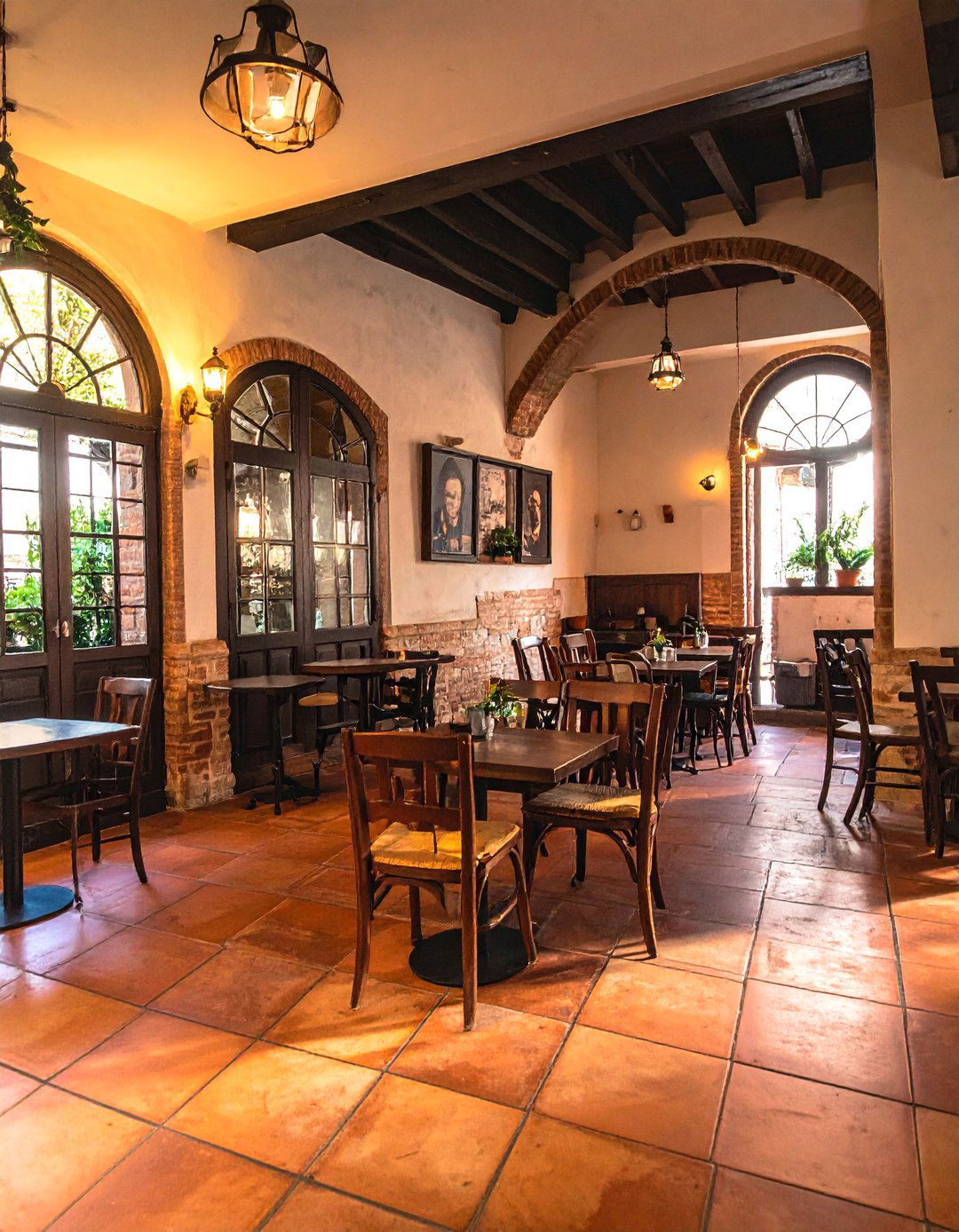
A foundational element of classic Italian restaurant decor involves using terracotta tiled floors. These earthy, warm-toned tiles instantly evoke the sun-baked landscapes of Tuscany and Southern Italy. Their natural, slightly uneven texture adds a layer of rustic authenticity that polished surfaces cannot replicate. For an even more genuine feel, consider arranging them in a traditional herringbone or a simple grid pattern. This flooring choice is not only aesthetically pleasing but also incredibly durable, making it a practical option for high-traffic restaurant environments. Paired with wooden furniture and warm lighting, terracotta floors create a welcoming and grounded atmosphere for diners.
2. Exposed Brick and Stone Walls
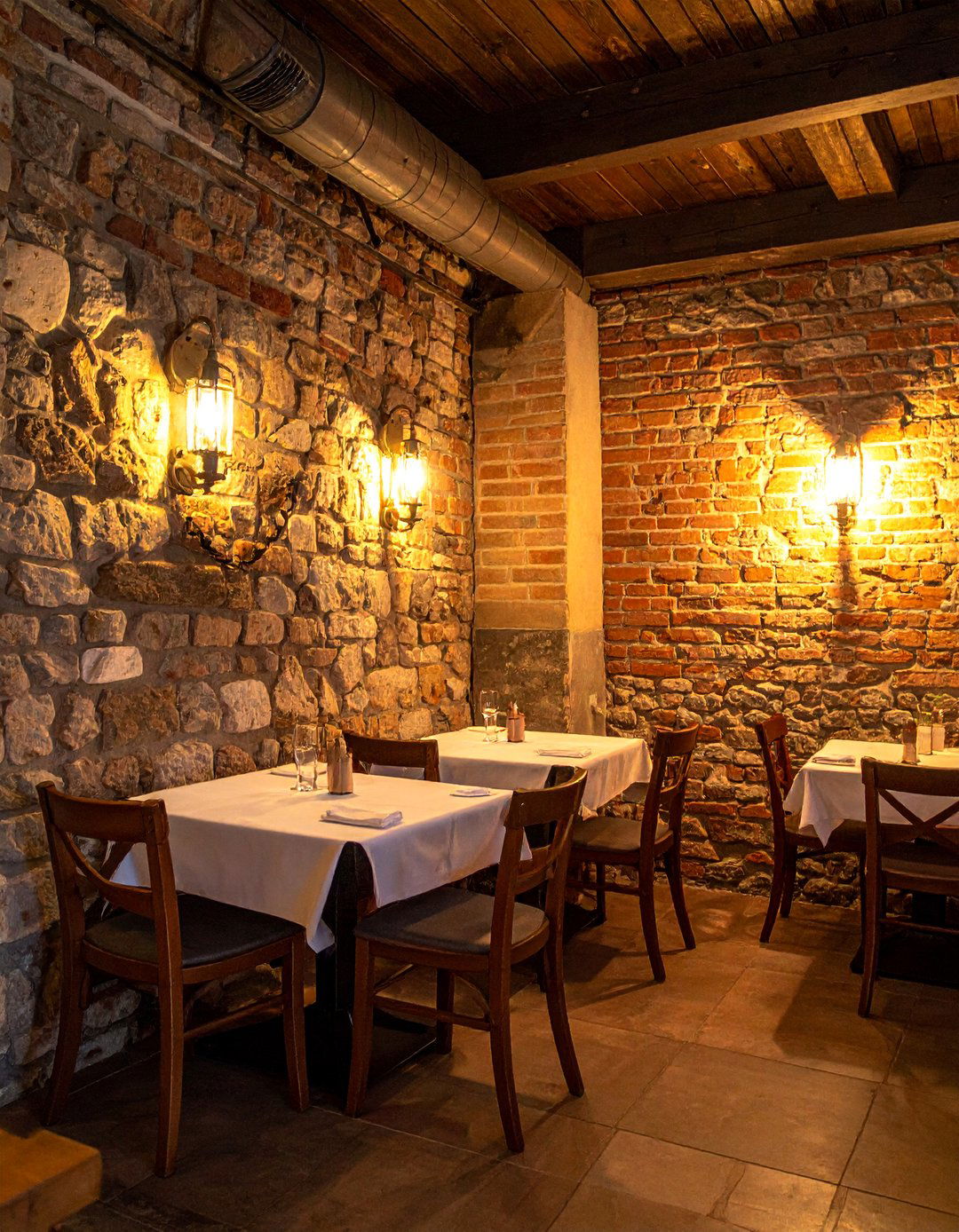
Exposed brick or stone walls are a hallmark of authentic Italian restaurant decor, suggesting history and rustic charm. This textural feature creates an immediate sense of warmth and character, reminiscent of old-world cellars or countryside villas. Leaving original masonry exposed adds a story to the space, hinting at a timeless quality. To balance the ruggedness of the brick or stone, complement it with softer elements like plush upholstery, warm wooden accents, and soft, ambient lighting. This design choice works exceptionally well in creating an intimate and cozy dining environment where guests feel comfortable lingering over their meals and conversation.
3. Hand-Painted Wall Murals of Italian Landscapes
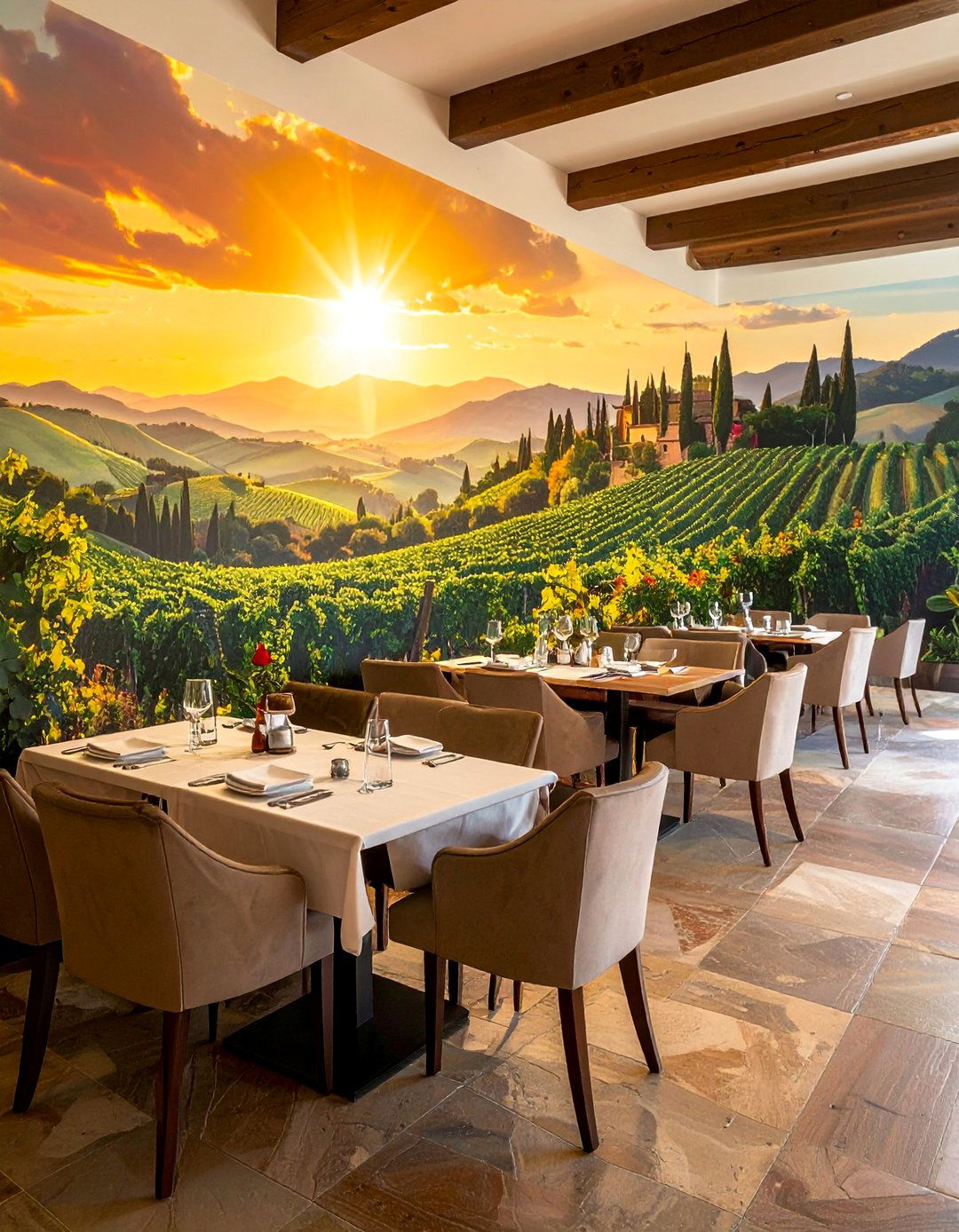
Transport your guests to the rolling hills of Tuscany or the vibrant Amalfi Coast with a hand-painted wall mural. This artistic Italian restaurant decor element serves as a stunning focal point, transforming a simple wall into a window with a breathtaking view. Consider depicting iconic scenes like vineyards at sunset, serene olive groves, or bustling Venetian canals. A professionally painted mural adds a unique, bespoke touch that cannot be achieved with prints or wallpaper. It not only enriches the visual experience but also sparks conversation, allowing diners to immerse themselves fully in the Italian theme while they enjoy their meal.
4. Abundant Wine Bottle Displays
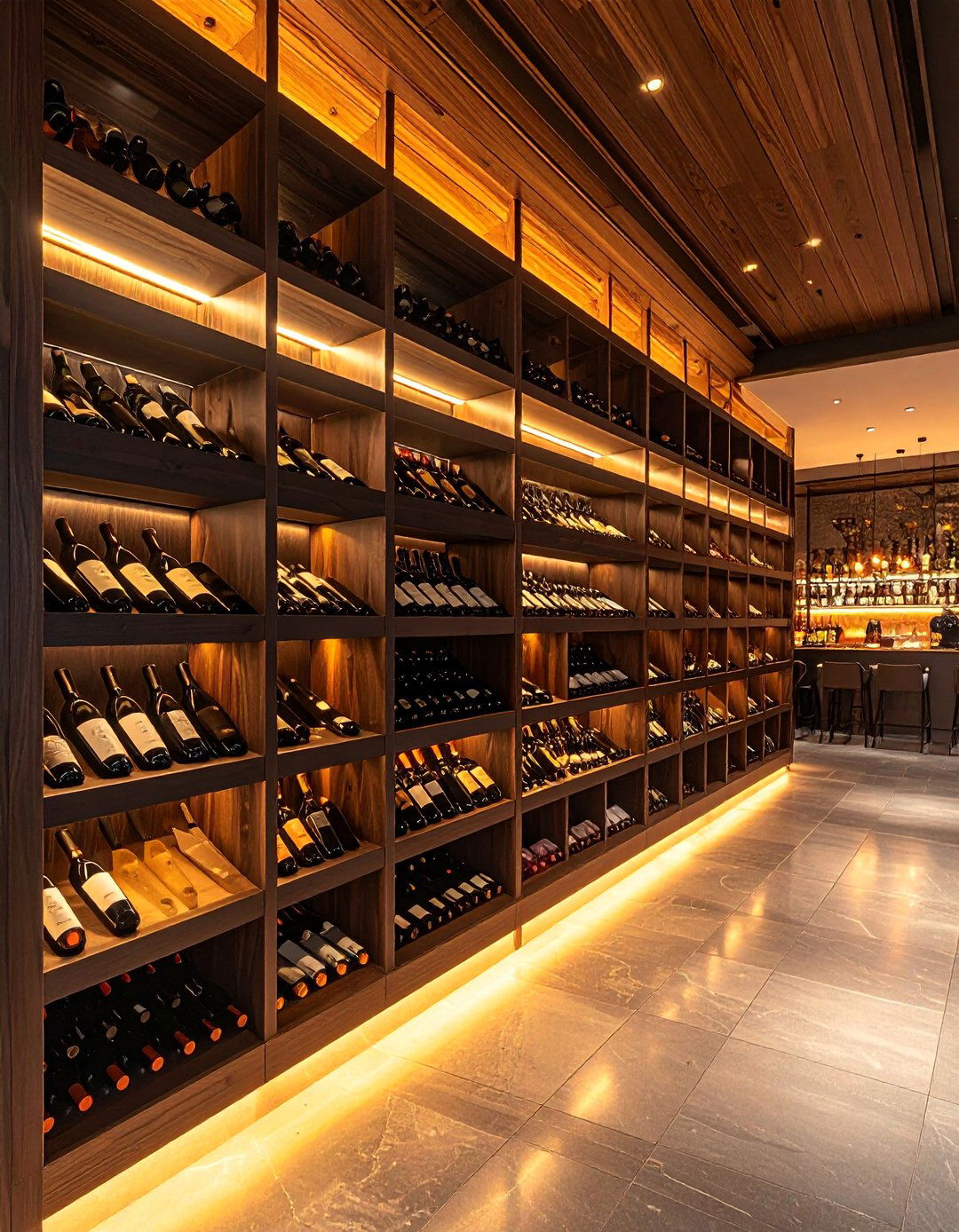
What is an Italian meal without wine? Incorporating abundant wine bottle displays into your Italian restaurant decor is both functional and atmospheric. Custom-built wooden wine racks, floor-to-ceiling shelves, or even artistic arrangements of bottles can turn your wine collection into a key design feature. This approach not only showcases your offerings but also reinforces the cultural importance of wine in Italian dining. The deep greens and ambers of the glass bottles add rich color and texture to the space. Strategically placed lighting can highlight the display, creating a sophisticated and inviting focal point that speaks to connoisseurs and casual diners alike.
5. Classic Red-and-White Checkered Tablecloths
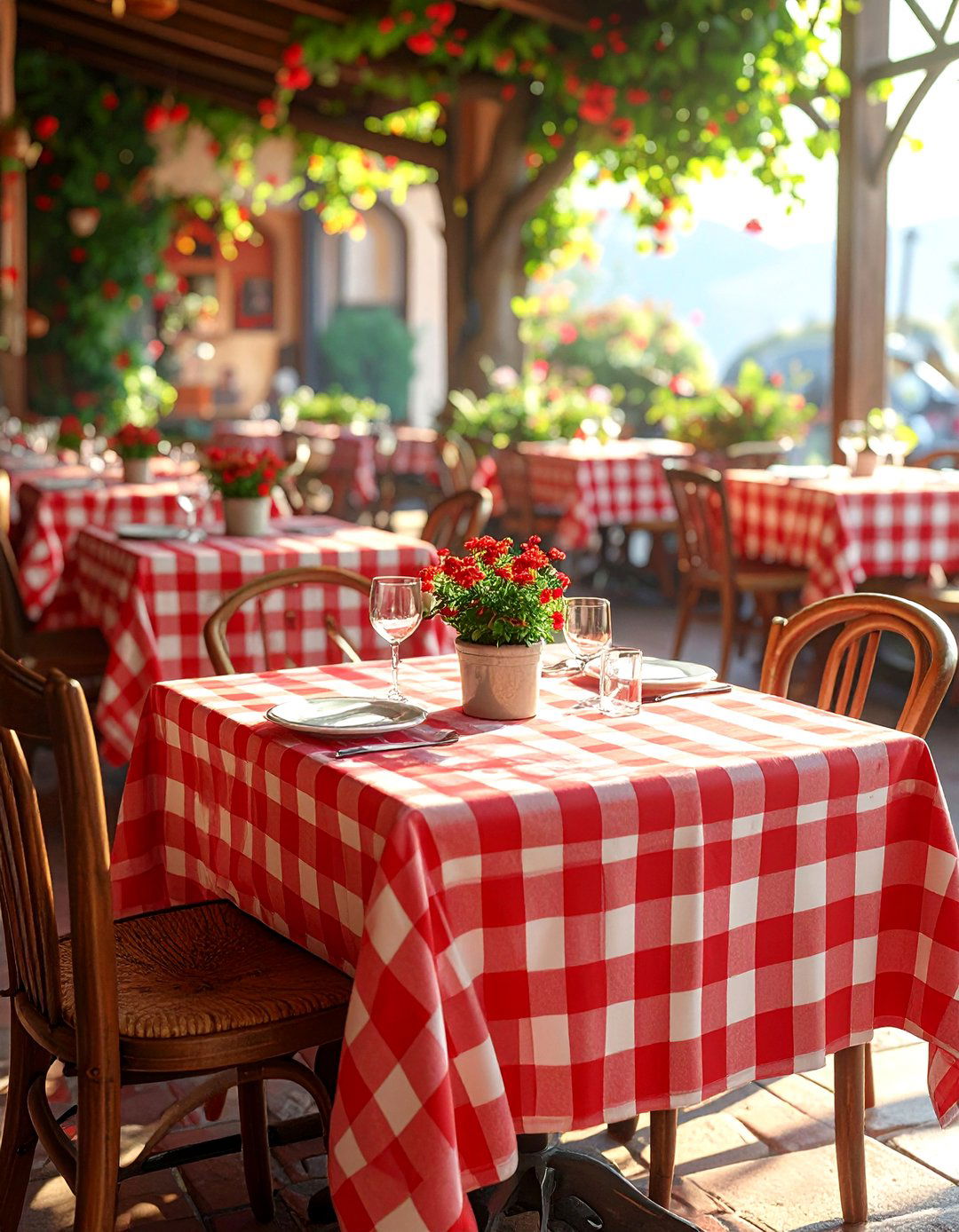
For a quintessential trattoria feel, the classic red-and-white checkered tablecloth is an unbeatable choice in Italian restaurant decor. This simple yet iconic element instantly creates a casual, friendly, and nostalgic atmosphere. It signals a place of comfort, tradition, and hearty, home-style cooking. While seemingly simple, these tablecloths bring a vibrant pop of color and pattern that enlivens the entire dining area. To elevate the look, pair them with simple, high-quality tableware, fresh flowers in a small vase, and classic bread baskets. This timeless design choice remains a powerful symbol of authentic, unpretentious Italian hospitality that makes every guest feel welcome.
6. Overhanging Greenery and Ivy Vines
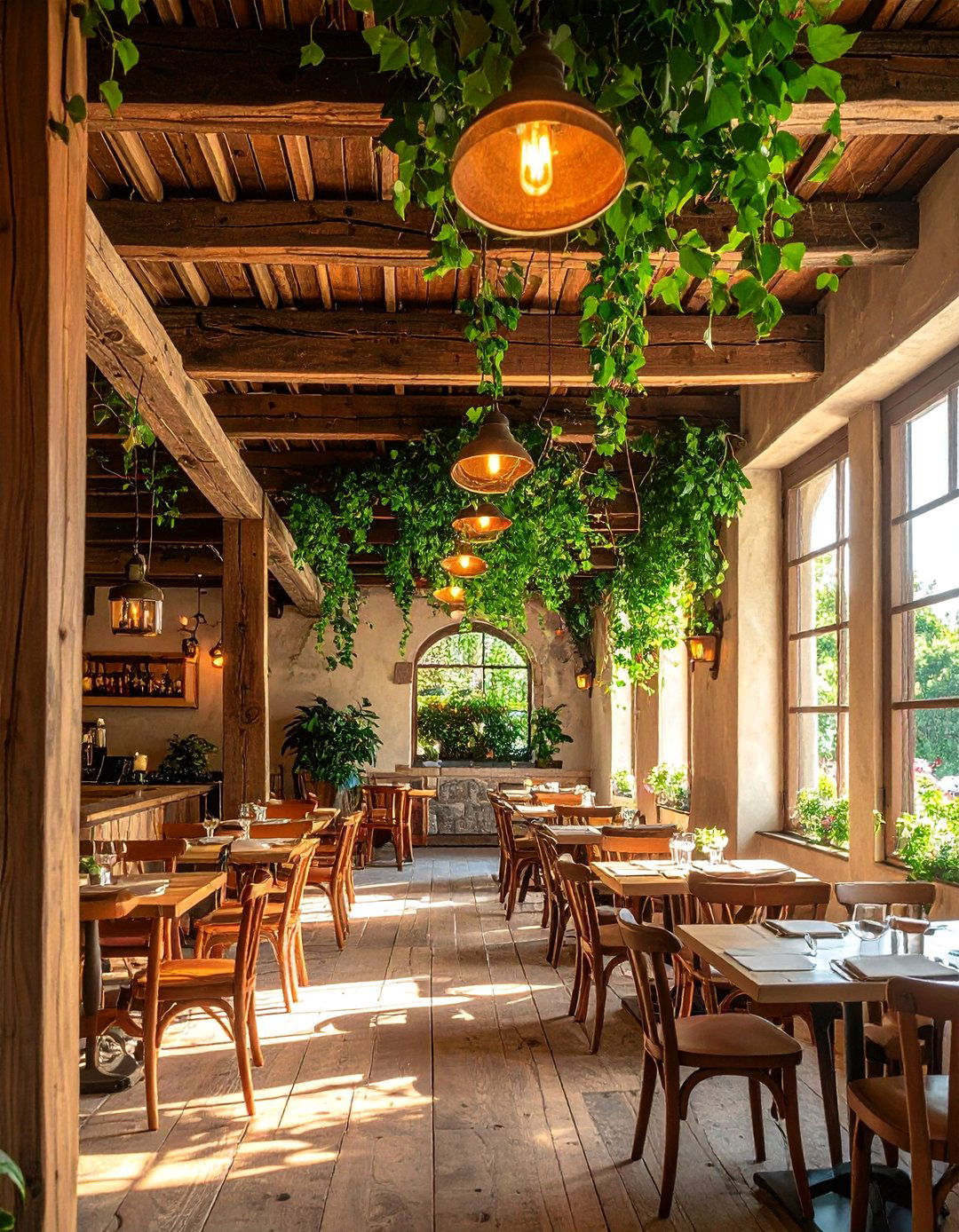
Bringing the outdoors in with overhanging greenery and ivy vines adds a fresh, biophilic touch to Italian restaurant decor. Imagine faux or real ivy cascading down from wooden ceiling beams, trellis partitions, or window frames. This creates a romantic, garden-like ambiance reminiscent of a courtyard in Florence or a veranda overlooking Lake Como. Potted plants like ferns, herbs, and small citrus trees can also be placed strategically throughout the space to enhance the natural feel. The vibrant green foliage provides a beautiful contrast against rustic elements like brick walls and terracotta floors, making the dining environment feel alive and serene.
7. Warm, Ambient String Lighting
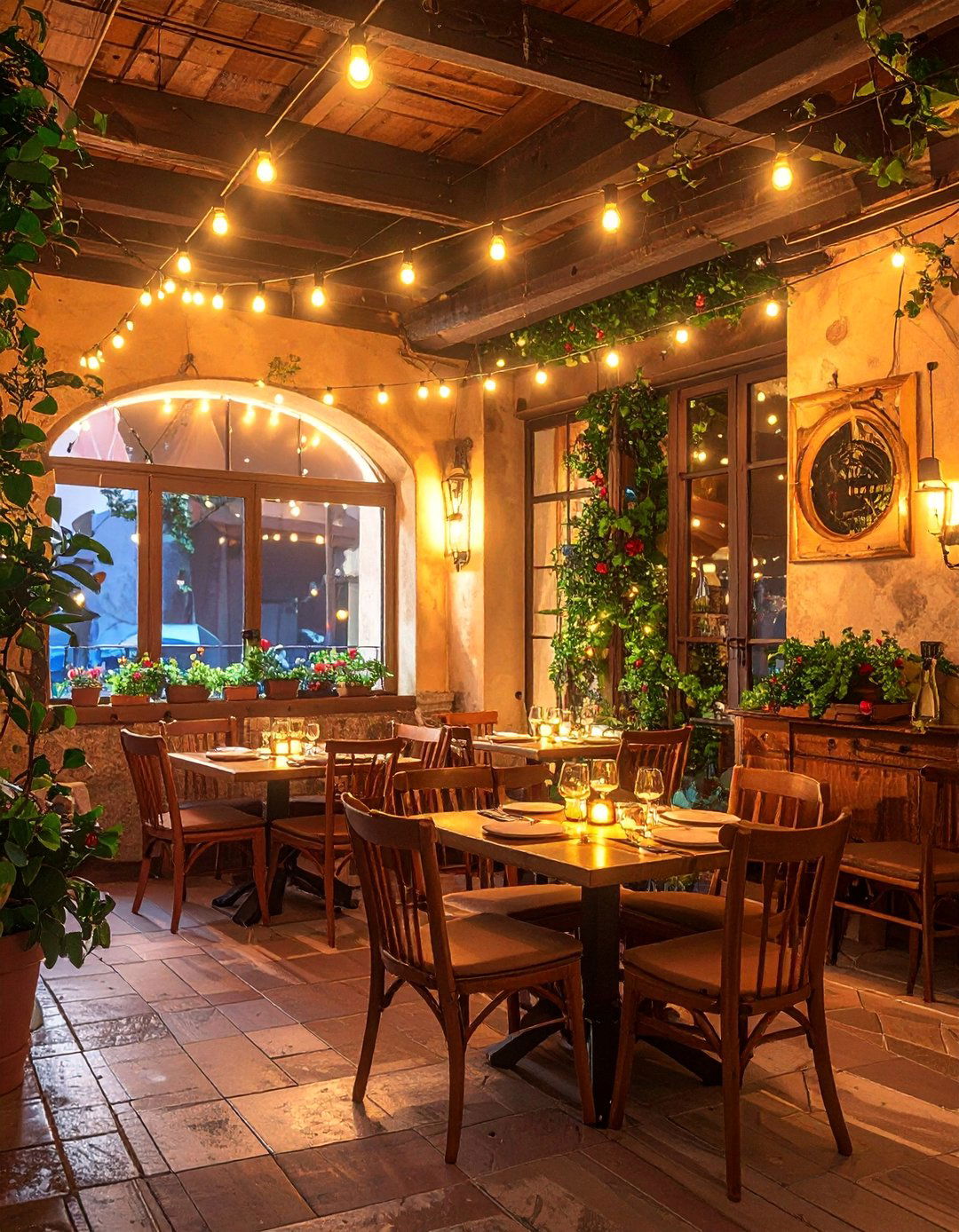
To achieve that magical, evening-in-an-Italian-piazza feeling, incorporate warm, ambient string lighting. Often referred to as bistro or fairy lights, these delicate strands cast a soft, golden glow that creates an intimate and romantic atmosphere. Drape them across the ceiling, weave them through overhead trellises, or string them across an outdoor patio area. This Italian restaurant decor choice is incredibly effective at making a large space feel cozier and more inviting. The gentle illumination is flattering and encourages guests to relax and stay longer, enhancing their overall dining experience with a touch of enchantment and warmth.
8. Olive Oil and Vinegar Cruet Sets on Tables
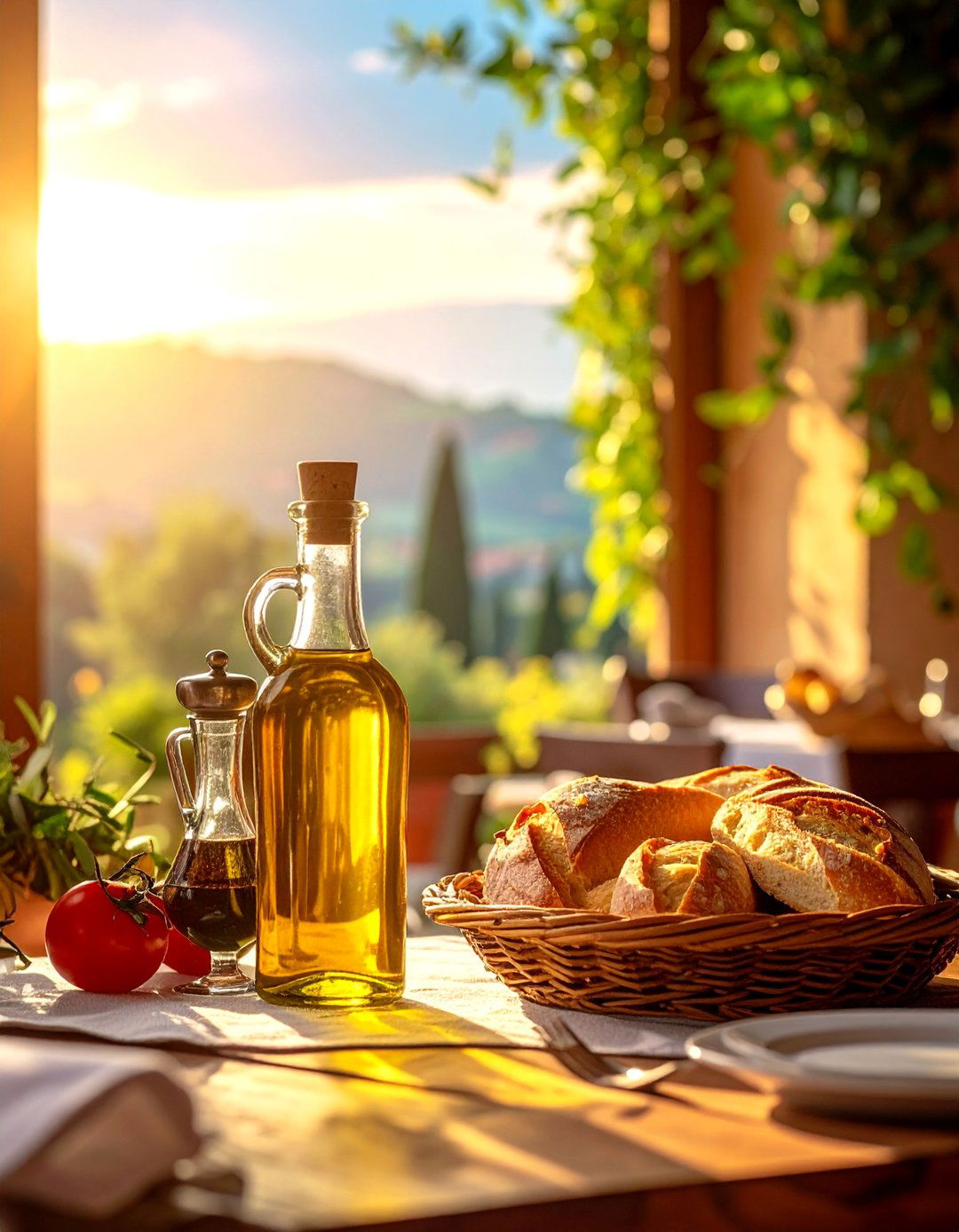
A small but significant detail in authentic Italian restaurant decor is the presence of high-quality olive oil and vinegar cruet sets on every table. This touch goes beyond simple condiment provision; it's a nod to the heart of Italian cuisine. Displaying extra virgin olive oil and balsamic vinegar in elegant glass bottles invites guests to begin their meal in the traditional way, by dipping fresh bread. This simple act enhances the interactive dining experience and signals a commitment to authentic flavors and ingredients. Choose stylish cruets that complement your overall aesthetic, whether rustic ceramic or sleek, modern glass, to reinforce your restaurant's character.
9. Dark Wood Beams and Furniture
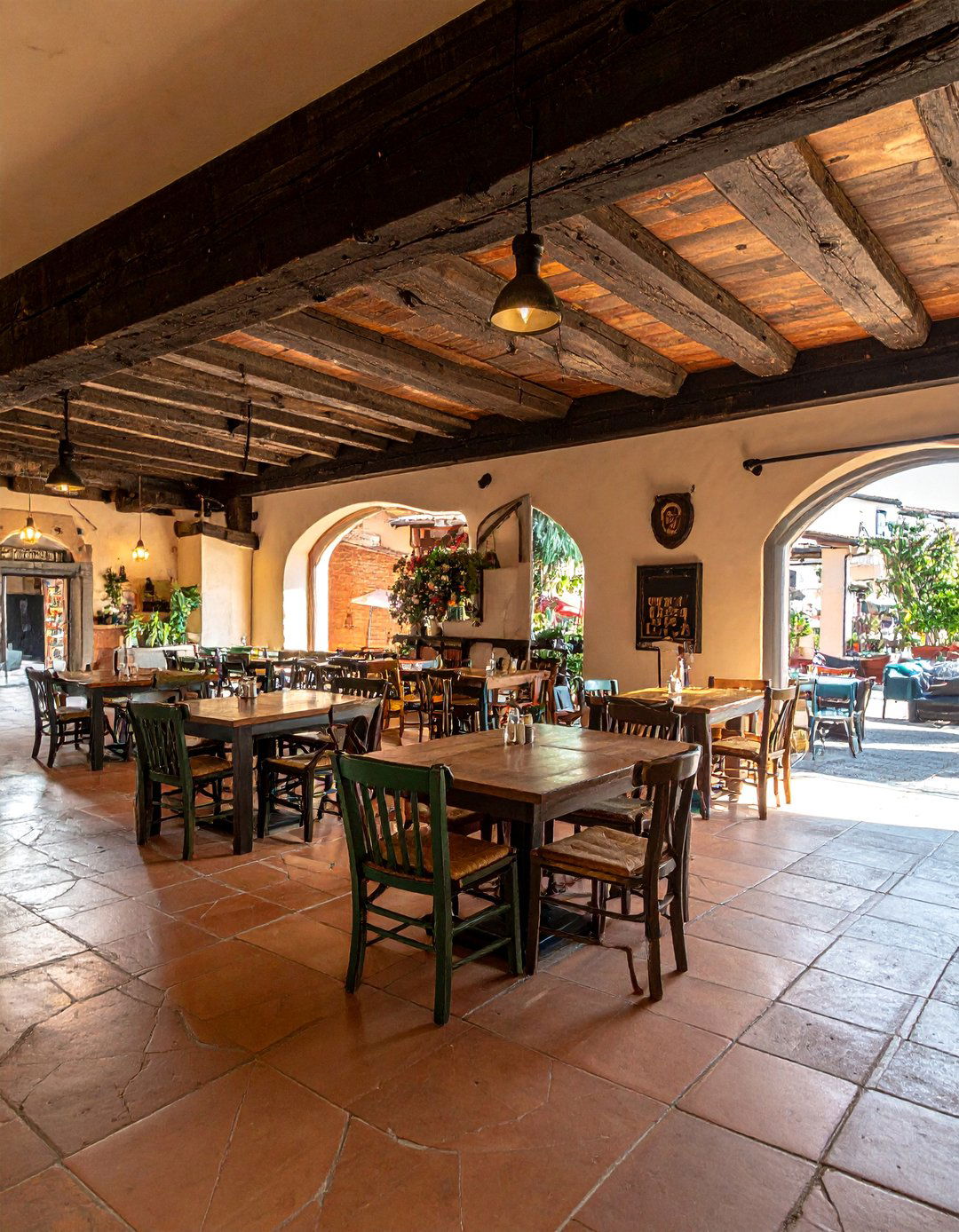
Incorporating dark wood beams and furniture is a classic strategy for achieving a rustic and substantial feel in Italian restaurant decor. Exposed wooden ceiling beams add architectural interest and an old-world charm, suggesting a structure that has stood for generations. Complement this with sturdy, dark-stained wooden tables and chairs. This choice of material grounds the space, creating a sense of permanence and tradition. The rich tones of the wood pair beautifully with warm lighting and other natural materials like stone and terracotta, resulting in a cozy, welcoming environment that feels both robust and timelessly elegant.
10. Venetian Plaster Wall Finishes
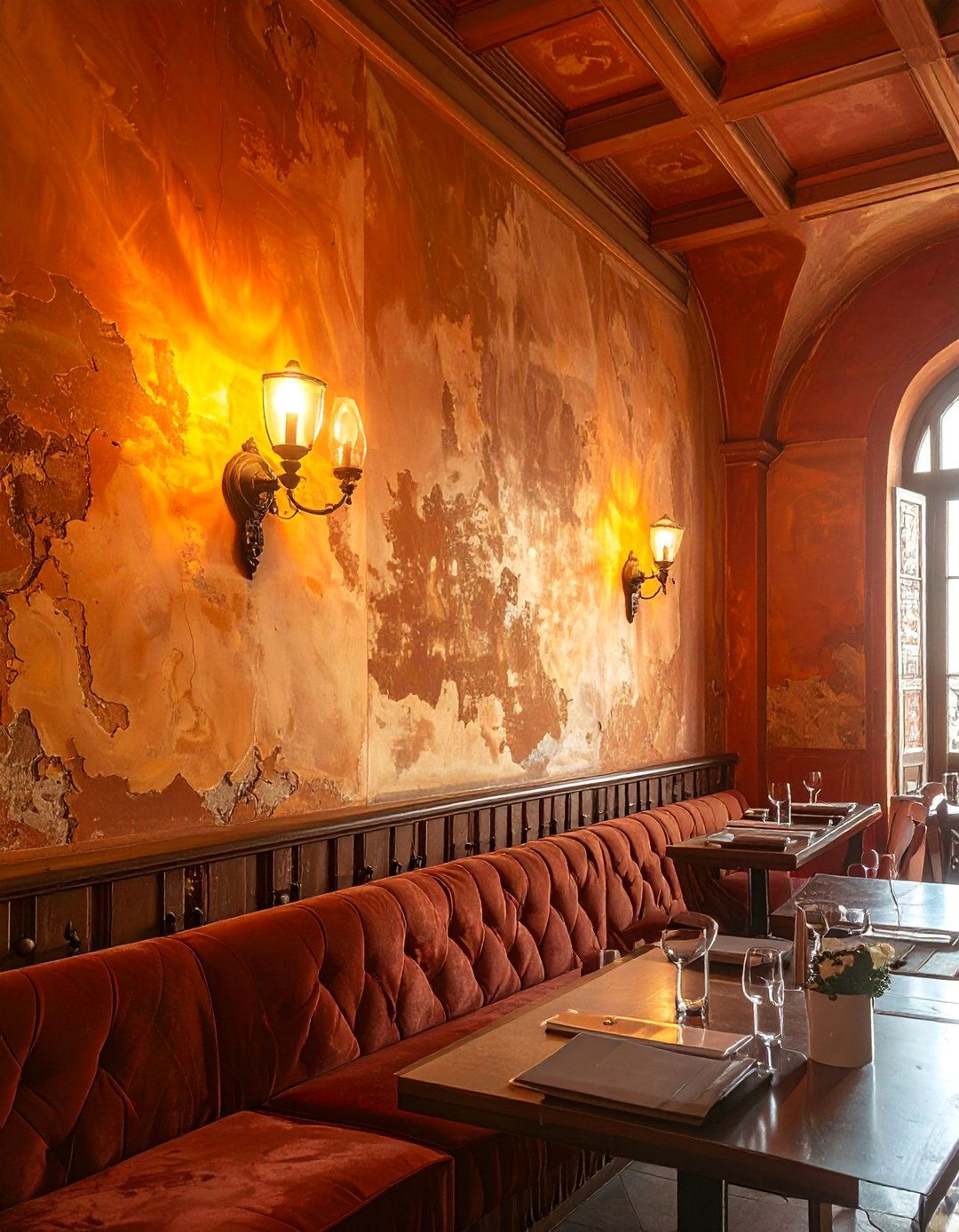
For a touch of sophisticated, old-world elegance, consider using Venetian plaster for your wall finishes. This Italian restaurant decor technique involves applying layers of plaster to create a smooth, subtly textured surface with the illusion of depth and movement. The finish is reminiscent of ancient Italian villas and palazzos, offering a polished yet organic look that reflects light beautifully. Available in a range of earthy tones, Venetian plaster adds a soft, marble-like sheen that elevates the ambiance beyond simple painted walls. It provides a luxurious and timeless backdrop that complements both rustic and more refined design schemes, adding a layer of authentic craftsmanship.
11. Arched Doorways and Windows
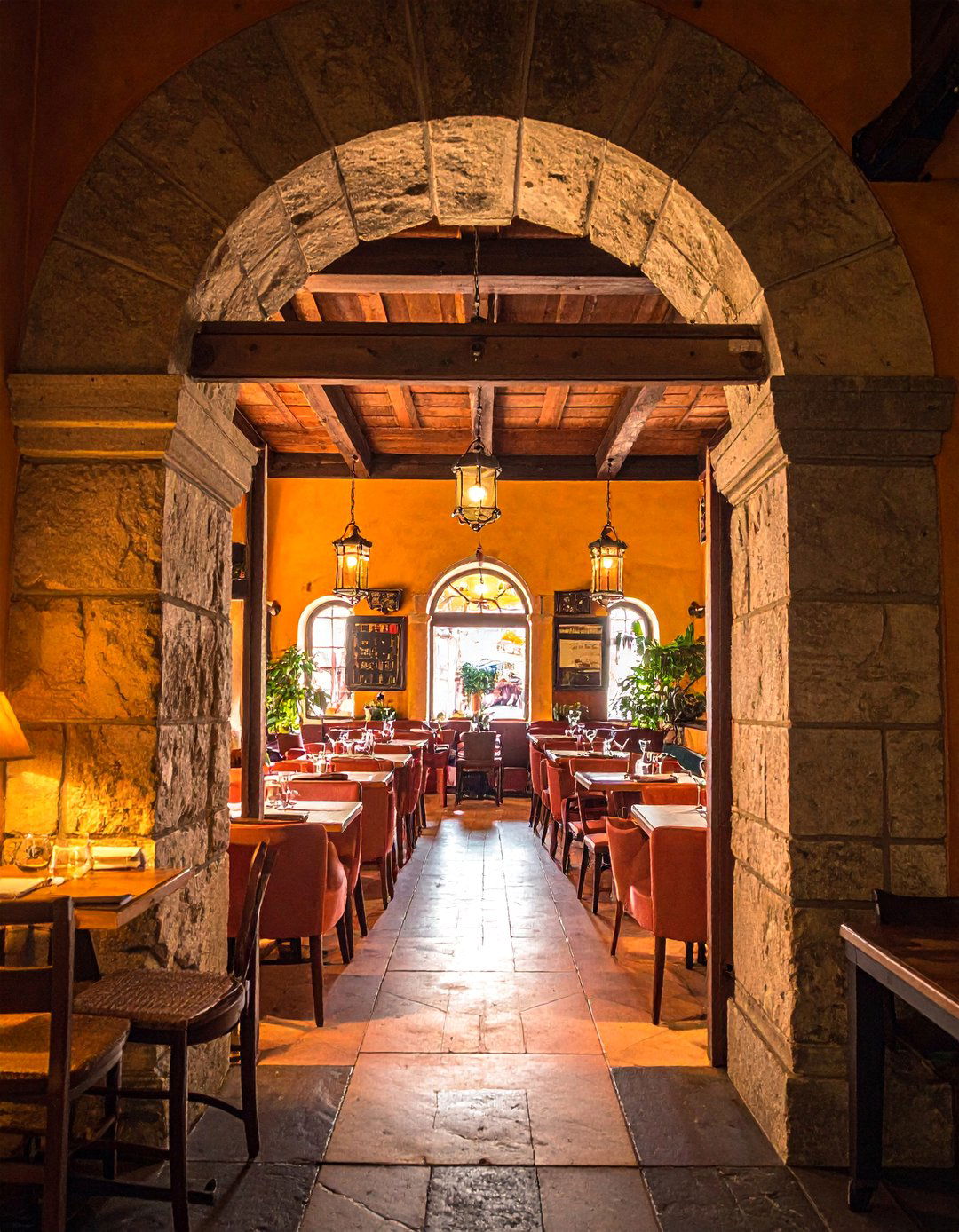
Architectural details like arched doorways and windows are quintessentially Mediterranean and a powerful element in Italian restaurant decor. These graceful curves soften the lines of a room and evoke the classic architecture of Rome and Florence. An arched entrance can make a dramatic first impression, while arched windows can beautifully frame outdoor views or interior murals. Even creating arched niches in walls for displaying art or wine can add significant character. This design choice enhances the sense of flow and openness within the space, contributing to an elegant and historically resonant atmosphere that feels genuinely Italian.
12. Open Kitchen with a Wood-Fired Oven
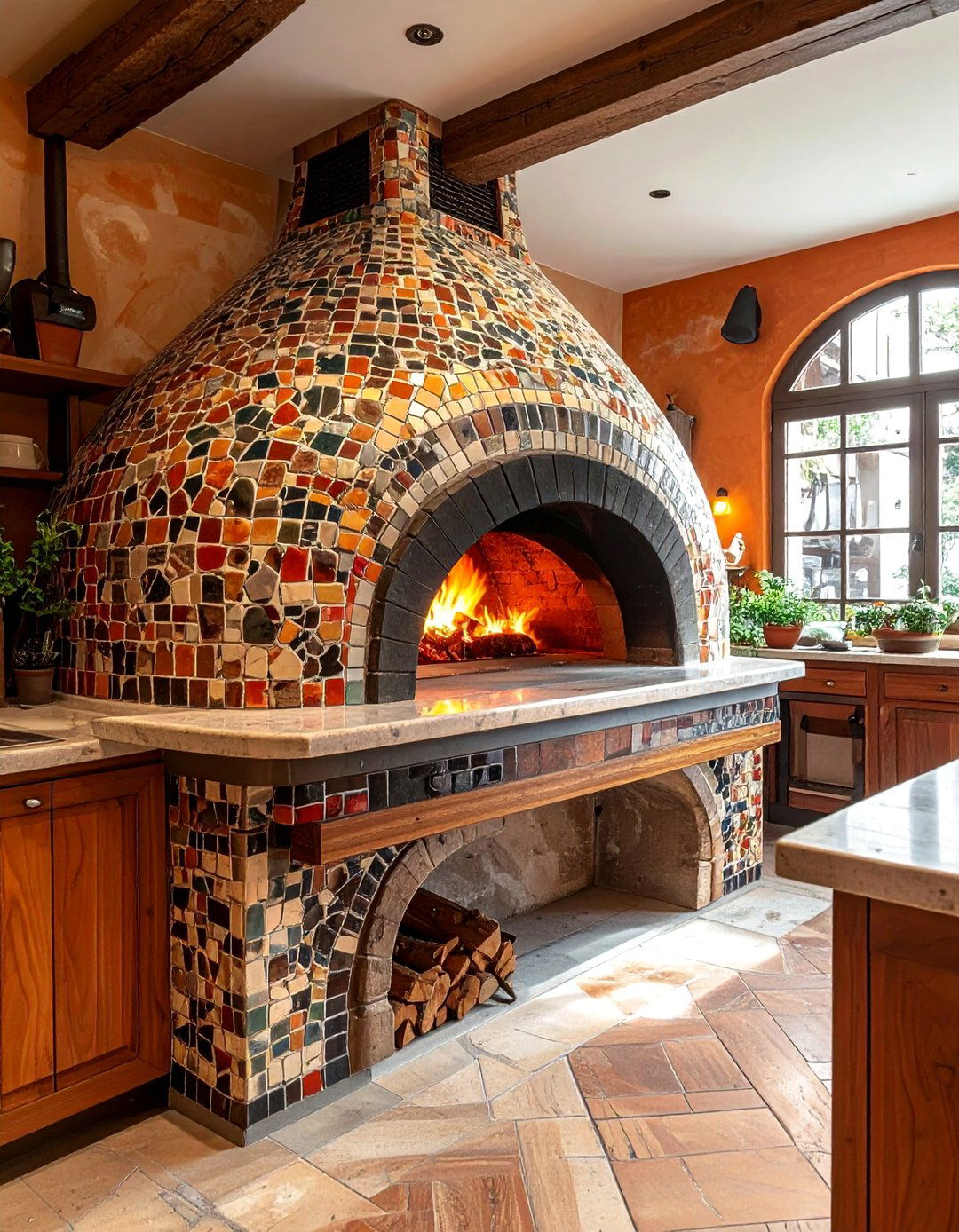
An open kitchen featuring a prominent wood-fired pizza oven is a dynamic and engaging element for Italian restaurant decor. This design choice brings the energy and theater of cooking directly to the diners, creating a multi-sensory experience. The sight of chefs at work, the crackling of the fire, and the aroma of baking pizza all contribute to an authentic, lively atmosphere. The oven itself, often clad in brick or mosaic tiles, becomes a stunning rustic centerpiece. This transparency builds trust and connection with the patrons, while the warm glow from the oven adds to the overall coziness and welcoming feel of the restaurant.
13. Displays of Cured Meats and Cheeses
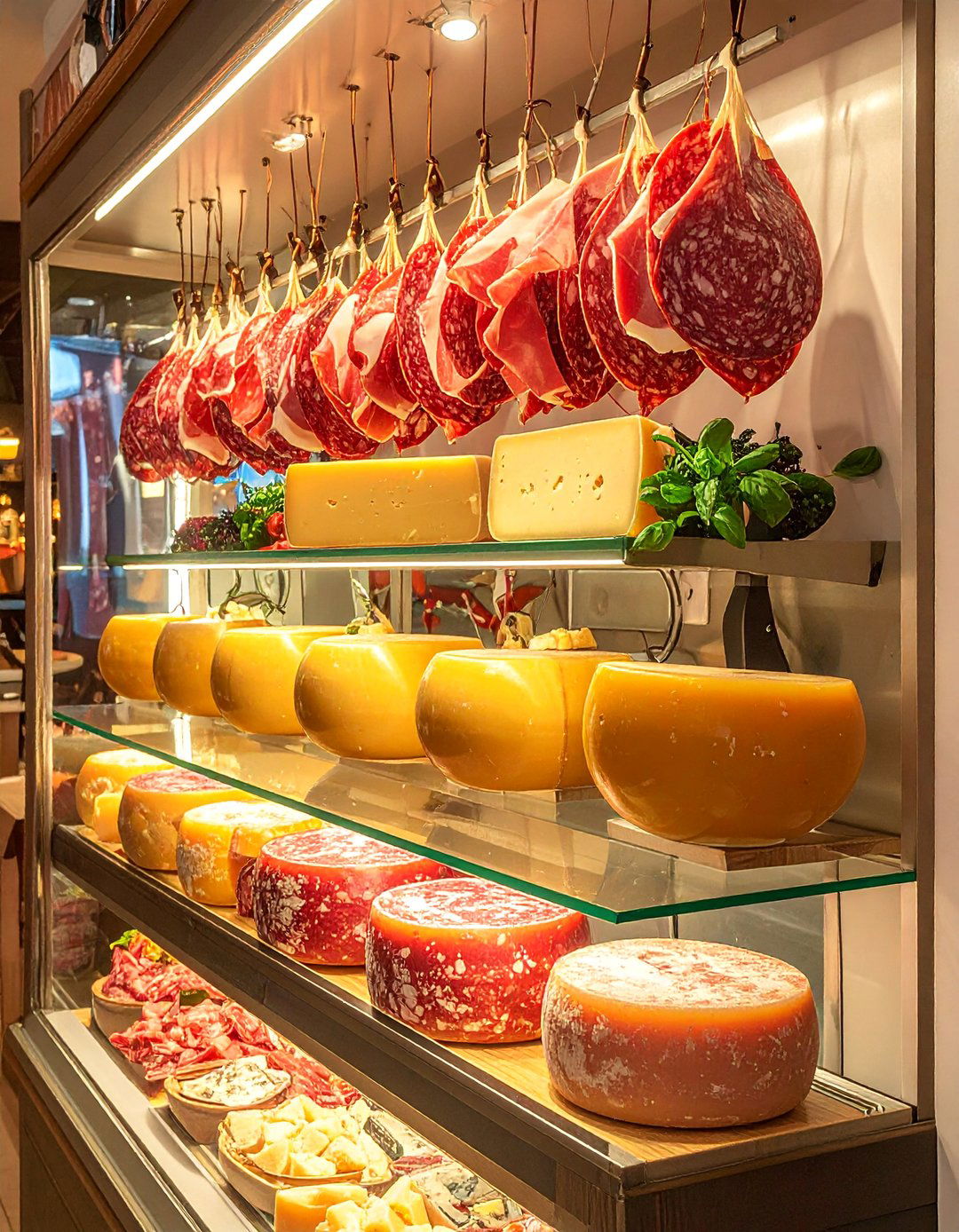
Showcasing high-quality ingredients is a fantastic way to blend decor with culinary promise. A glass display case or a dedicated counter featuring an artful arrangement of cured meats like prosciutto and salami, alongside wheels of artisanal cheeses, is a feast for the eyes. This Italian restaurant decor strategy highlights the freshness and authenticity of your menu. Hung salumi and provolone add a rustic, delicatessen-style charm. This visual appetizer not only looks appealing but also serves as a conversation starter, enticing guests to try your charcuterie boards and specialty dishes, reinforcing your commitment to genuine Italian flavors.
14. Copper Pots and Pans as Decor
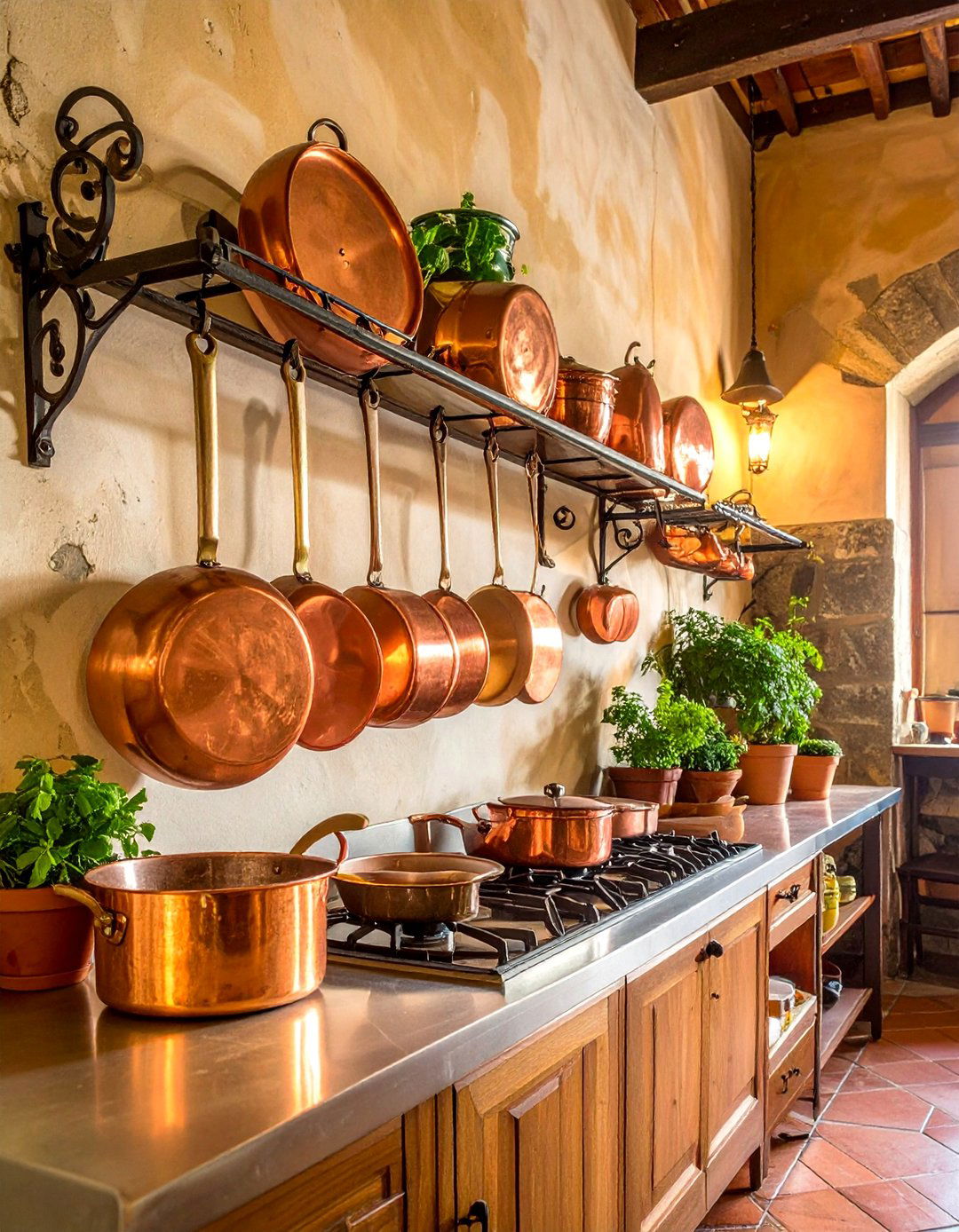
Using copper pots and pans as decorative accents adds a warm, metallic sheen and a touch of rustic culinary charm. Hang a collection of polished copper cookware from a ceiling rack over the kitchen pass or arrange them on open shelves. The rich, rosy glow of the copper contrasts beautifully with dark wood, brick, and stone, creating a look that is both professional and homey. This Italian restaurant decor idea hints at a bustling, well-loved kitchen where traditional recipes are brought to life. It’s a simple yet highly effective way to add texture, color, and an authentic culinary narrative to the space.
15. Themed Artwork and Vintage Posters
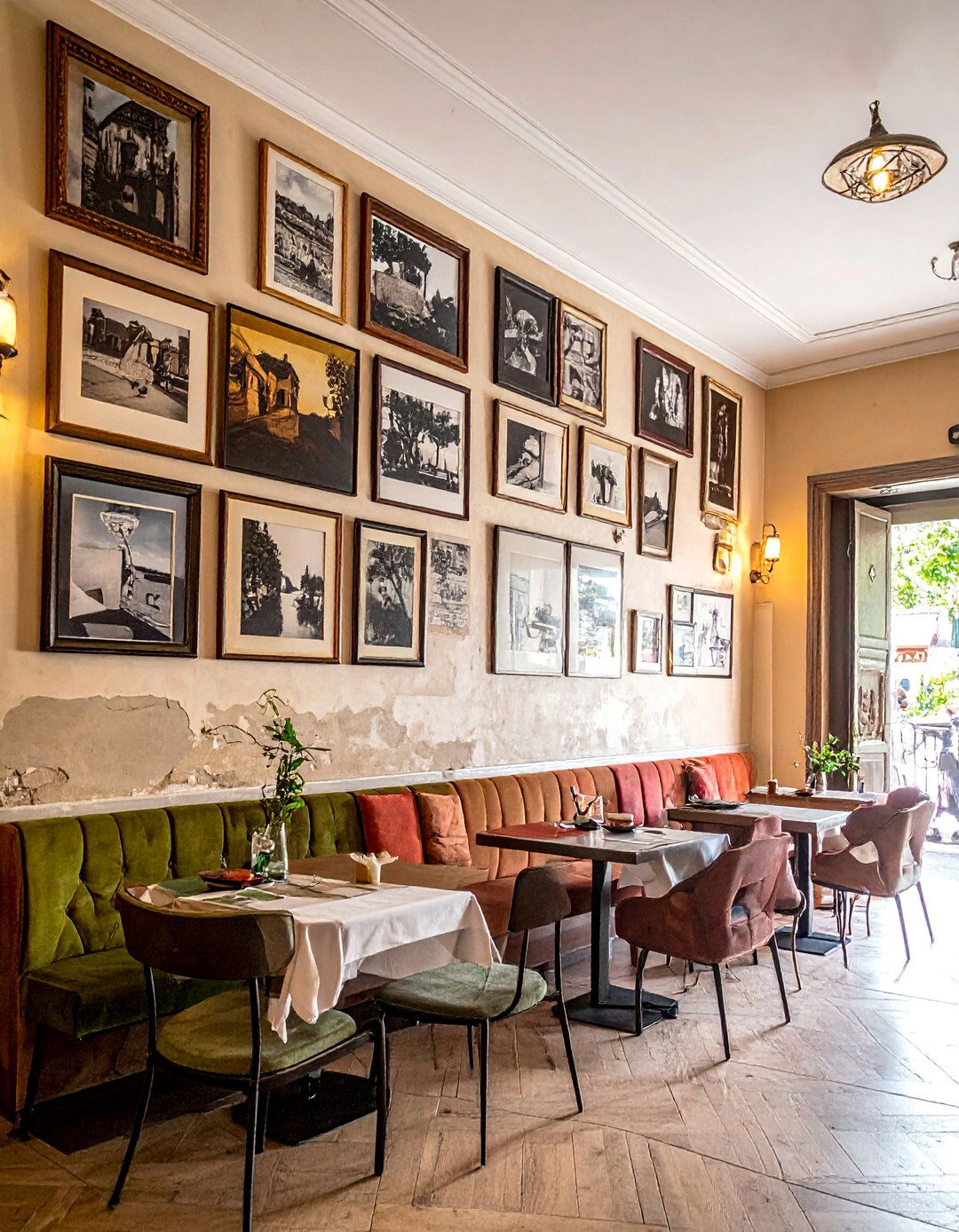
Adorning the walls with themed artwork and vintage Italian posters can instantly infuse personality and nostalgia into your restaurant. Select classic Italian movie posters, vintage travel advertisements for cities like Rome or Venice, or prints of famous Italian artworks. This approach adds color, character, and cultural context. For a more personal touch, frame black-and-white photographs of Italian family life or scenic landscapes. This Italian restaurant decor strategy creates visual interest and tells a story, making the space feel curated and personal. It helps immerse diners in the culture, turning the walls into a gallery of Italian heritage and style.
16. Wrought Iron Accents and Fixtures
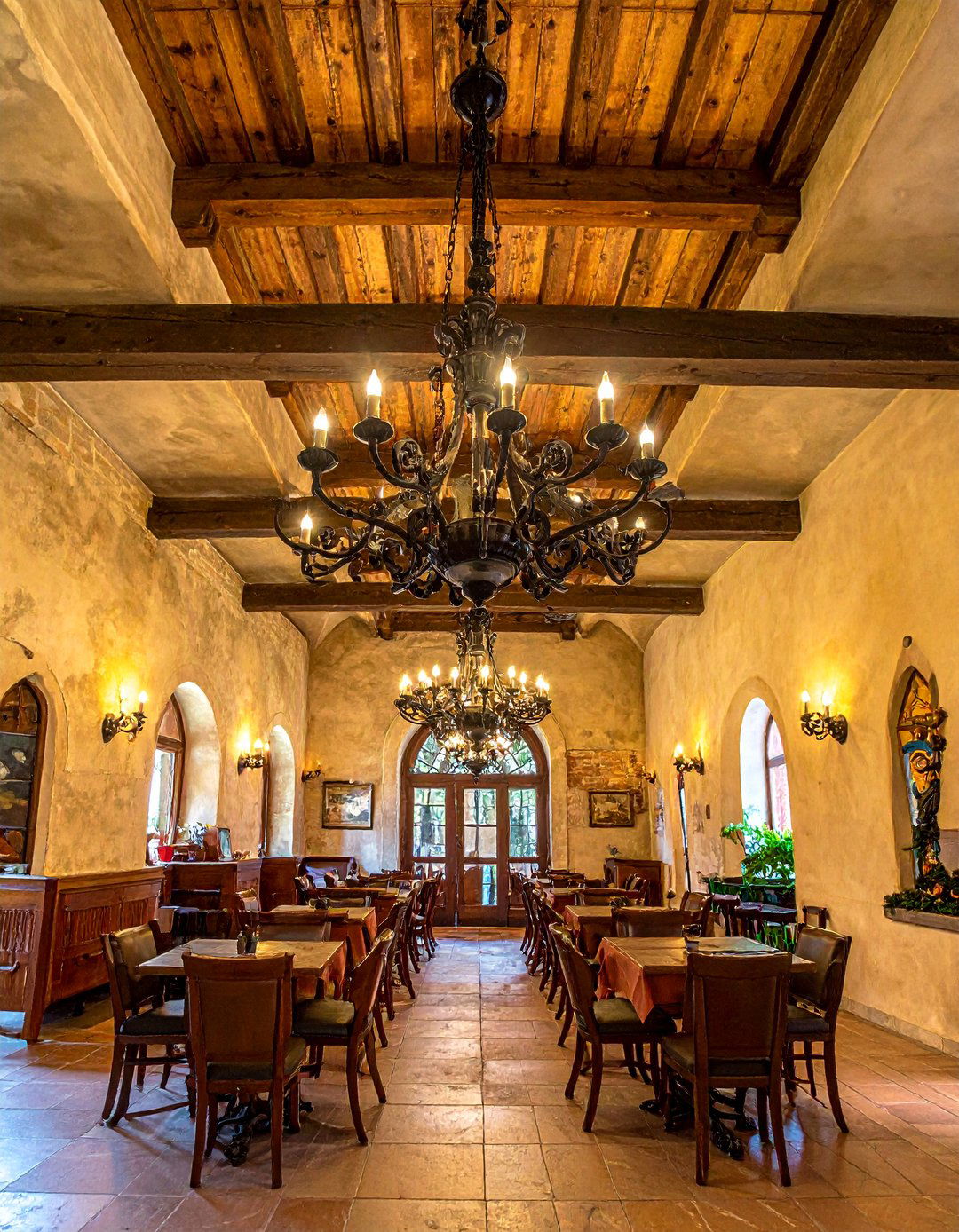
Incorporate the timeless elegance of wrought iron through various accents and fixtures. This classic material is a staple in Italian restaurant decor, adding a touch of rustic sophistication. Consider using wrought iron for light fixtures like chandeliers and sconces, which cast dramatic shadows and create a romantic ambiance. Wrought iron can also be used for staircase railings, window grilles, or as the base for tables. Its dark, sturdy appearance provides a striking contrast to lighter walls and floors, while its often intricate, swirling designs add an artistic and handcrafted element that enhances the old-world charm of the space.
17. Herb Gardens in Planter Boxes
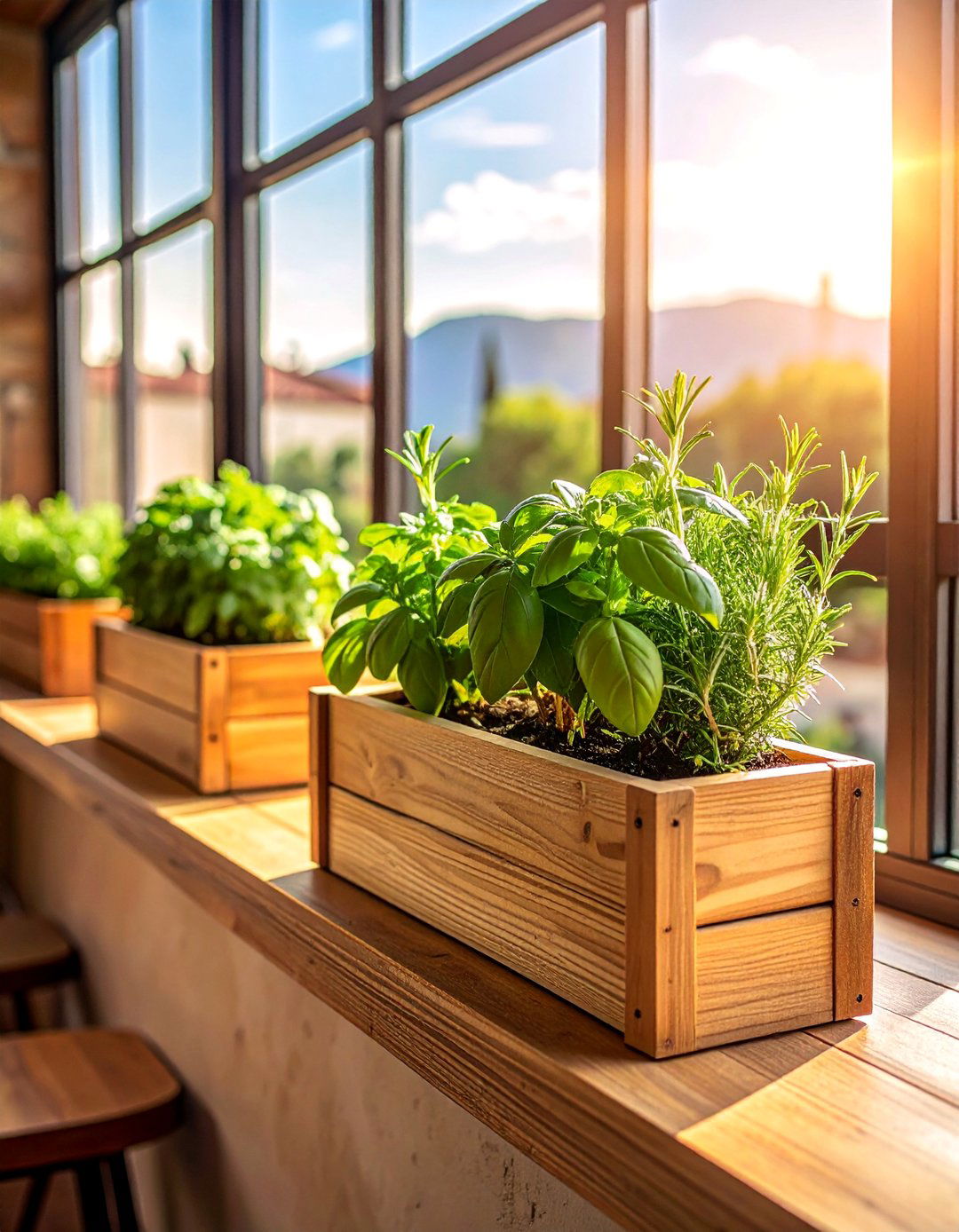
Bringing fresh herbs into the dining space appeals to the senses of sight and smell. Place small planter boxes filled with basil, rosemary, and oregano on windowsills, as table centerpieces, or along partitions. This Italian restaurant decor idea is not only beautiful but also practical, as chefs can use the fresh herbs in their dishes. The vibrant green color and fresh aroma enhance the atmosphere, suggesting a commitment to fresh, flavorful ingredients straight from the garden. This biophilic element adds a touch of rustic, farm-to-table charm, connecting diners more closely to the food they are about to enjoy.
18. Classic Roman Statues or Busts
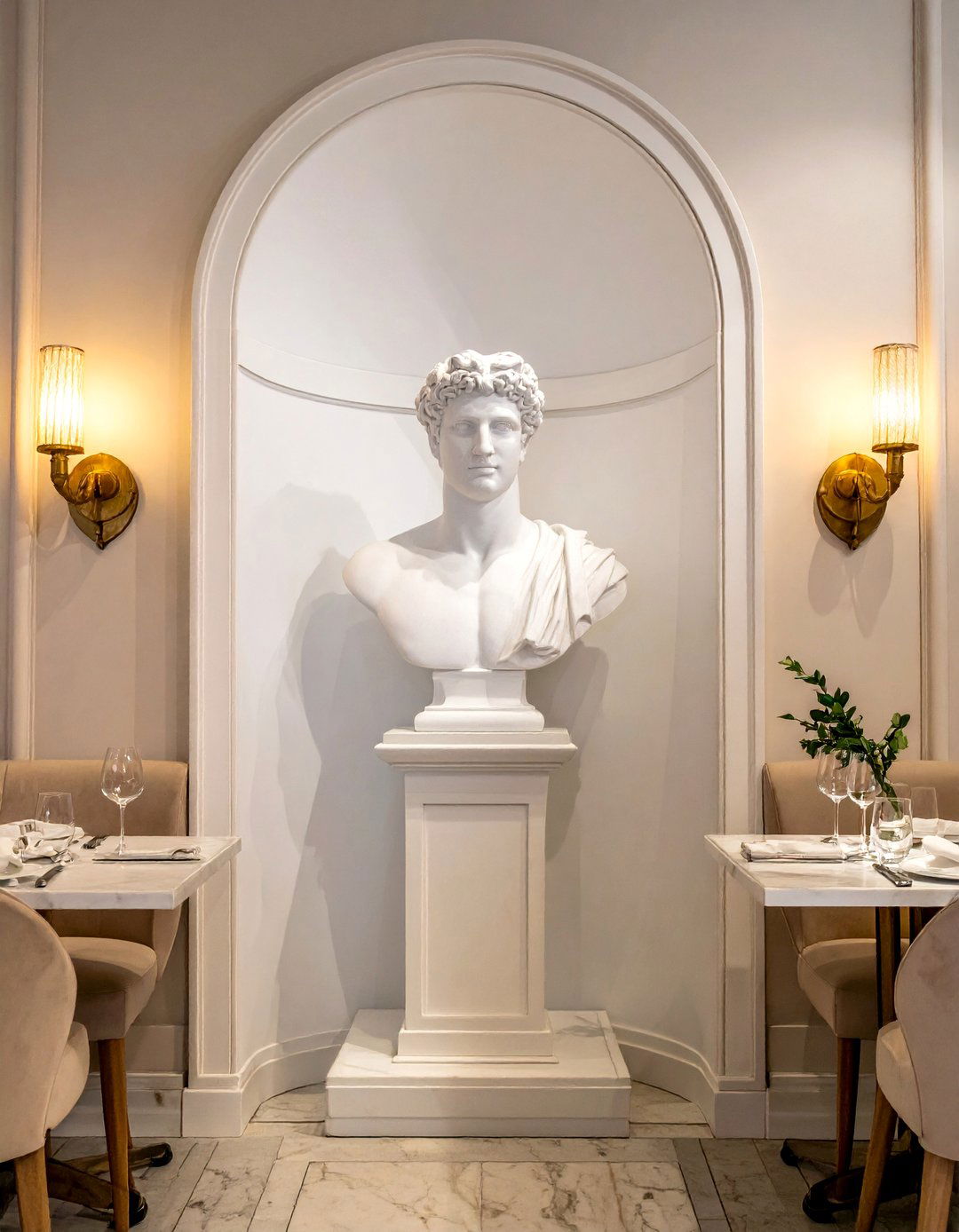
For a touch of classical grandeur, incorporate Roman-style statues or busts into your decor. Placing a tasteful replica of a famous sculpture like the Venus de Milo or a bust of a Roman emperor in a niche or on a pedestal adds a sense of history and artistic gravitas. This element of Italian restaurant decor pays homage to Italy's rich artistic heritage and the splendor of the Roman Empire. It works particularly well in more upscale or formal dining settings, creating an atmosphere of timeless elegance and cultural sophistication. The key is to use them sparingly as powerful focal points rather than cluttering the space.
19. Large Communal Farmhouse Tables
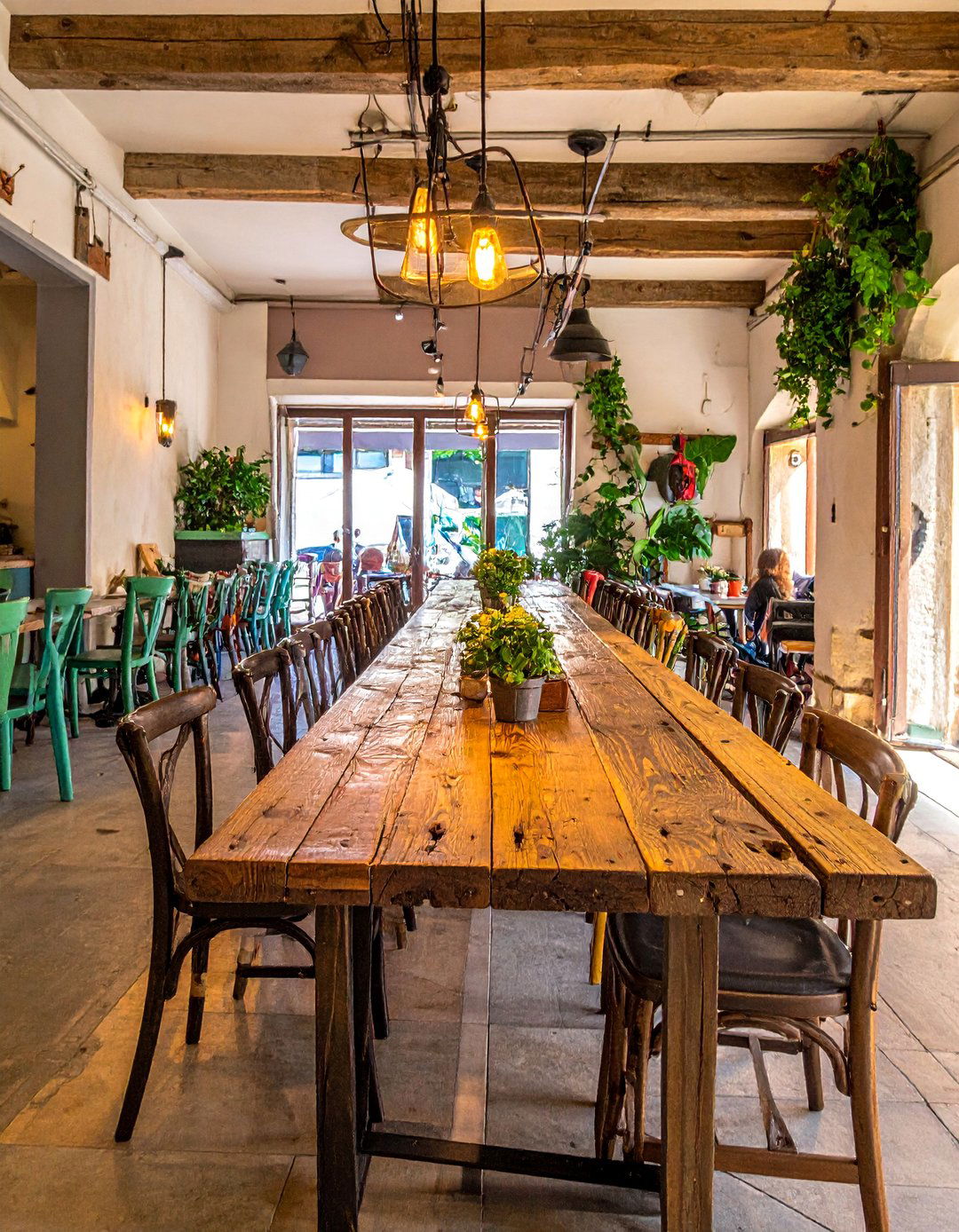
To foster a sense of family and community, which is central to Italian dining culture, include one or more large communal farmhouse tables. These long, rustic wooden tables encourage larger groups to dine together and can also seat smaller parties side-by-side, creating a lively, convivial atmosphere. This Italian restaurant decor choice is perfect for a trattoria or osteria setting, promoting a shared experience. A sturdy, reclaimed wood table becomes a natural centerpiece of the dining room, radiating warmth and hospitality and inviting guests to connect and share a meal in true Italian fashion.
20. Soft, Neutral Color Palette with Bold Accents
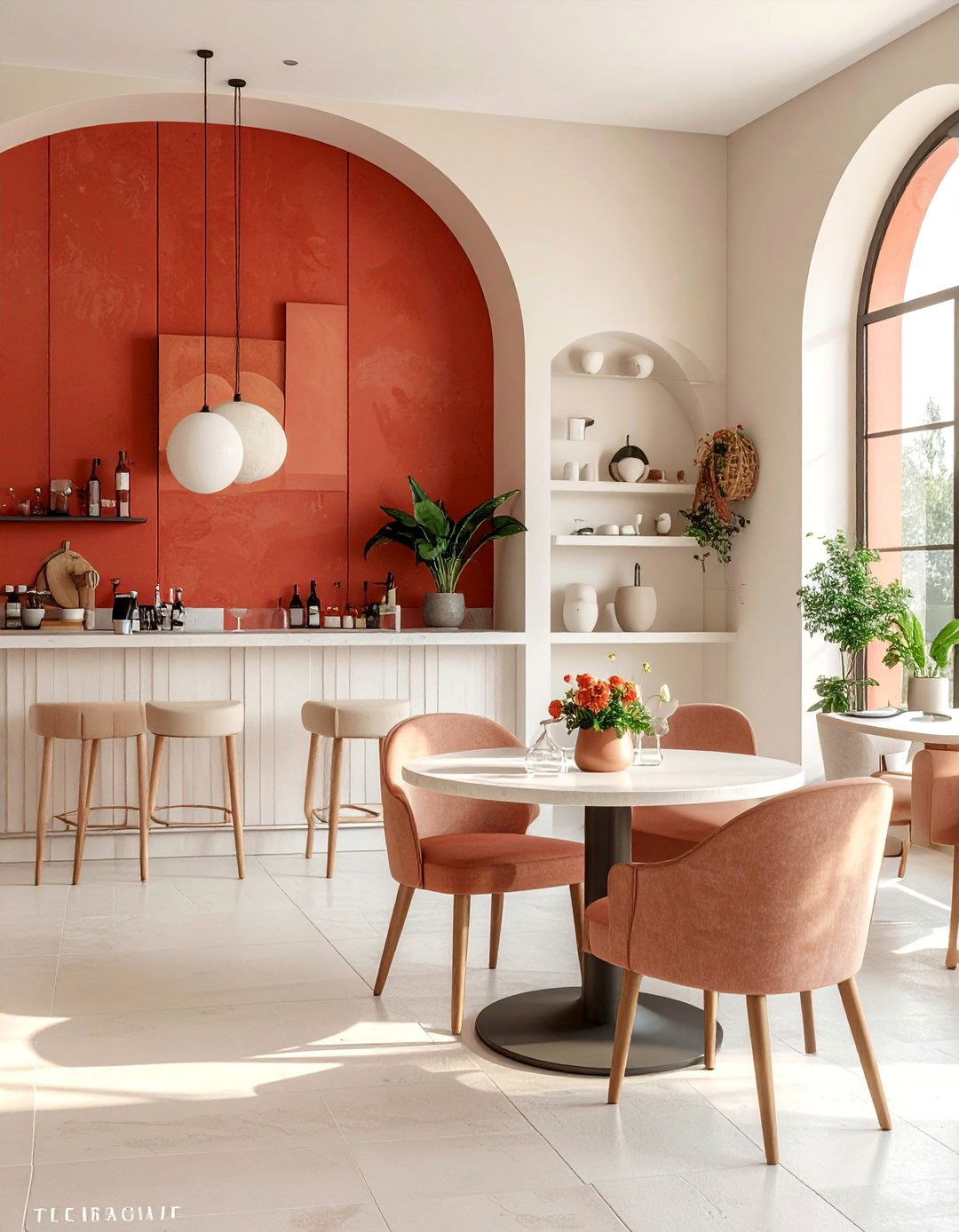
While often associated with red and green, a sophisticated Italian restaurant decor scheme can be built on a soft, neutral color palette. Think warm whites, creamy beiges, and earthy grays inspired by aged plaster and stone. This creates a calm and elegant backdrop that allows other elements to shine. Introduce bold accents through select features like deep red upholstery on banquettes, rich green from live plants, or the vibrant colors in a wall mural. This balanced approach creates a space that feels both relaxing and visually interesting, allowing the food and the company to take center stage.
Conclusion:
Ultimately, designing an authentic Italian restaurant is about creating a holistic experience where every detail contributes to a cohesive story. From the foundational choices of terracotta floors and exposed brick walls to the finishing touches of fresh herbs and ambient string lighting, each element works to transport guests to Italy. The key is to balance rustic charm with touches of elegance, creating a warm, inviting, and memorable atmosphere. By thoughtfully curating these decor ideas, you can craft a space that not only looks authentically Italian but feels like it too.

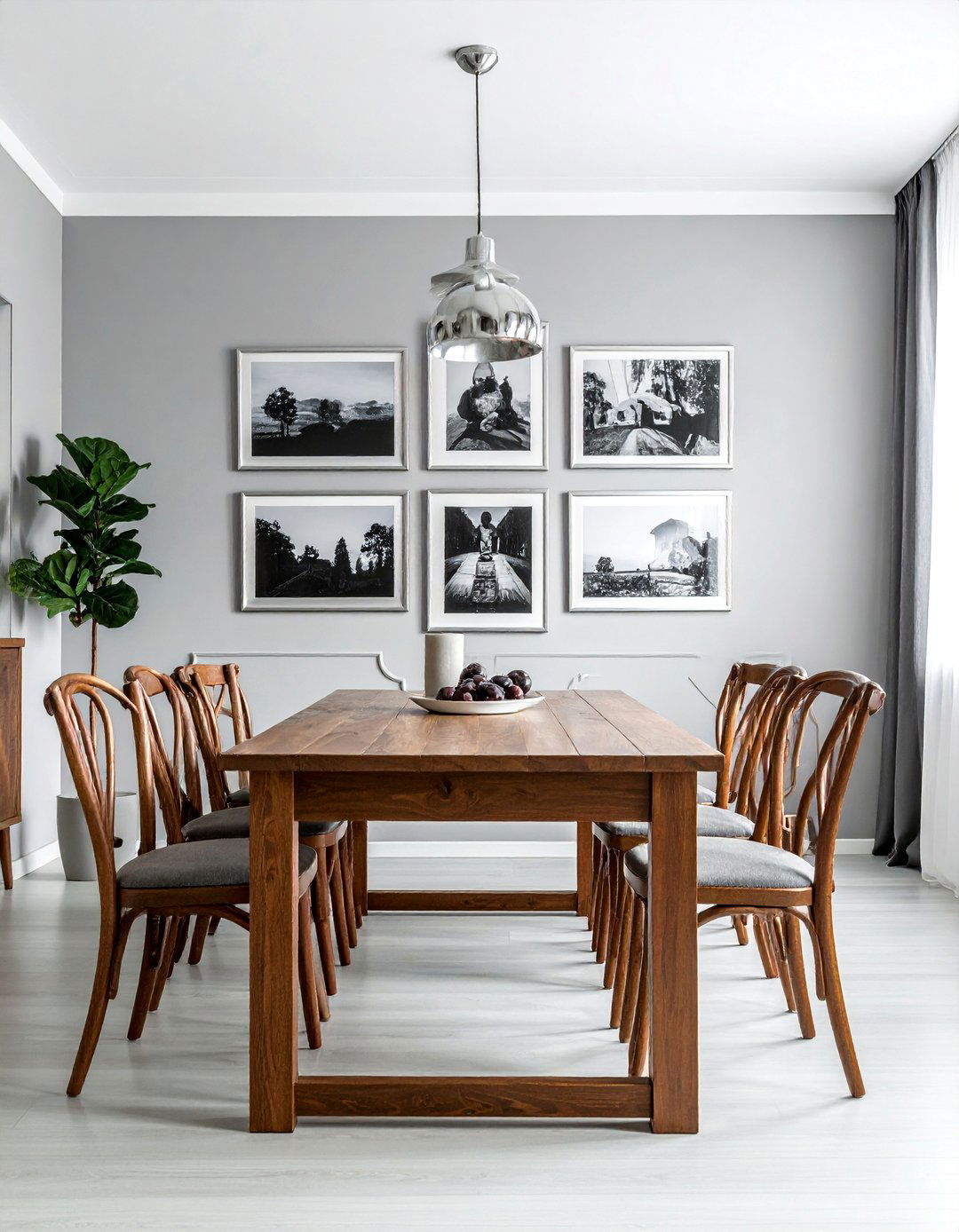
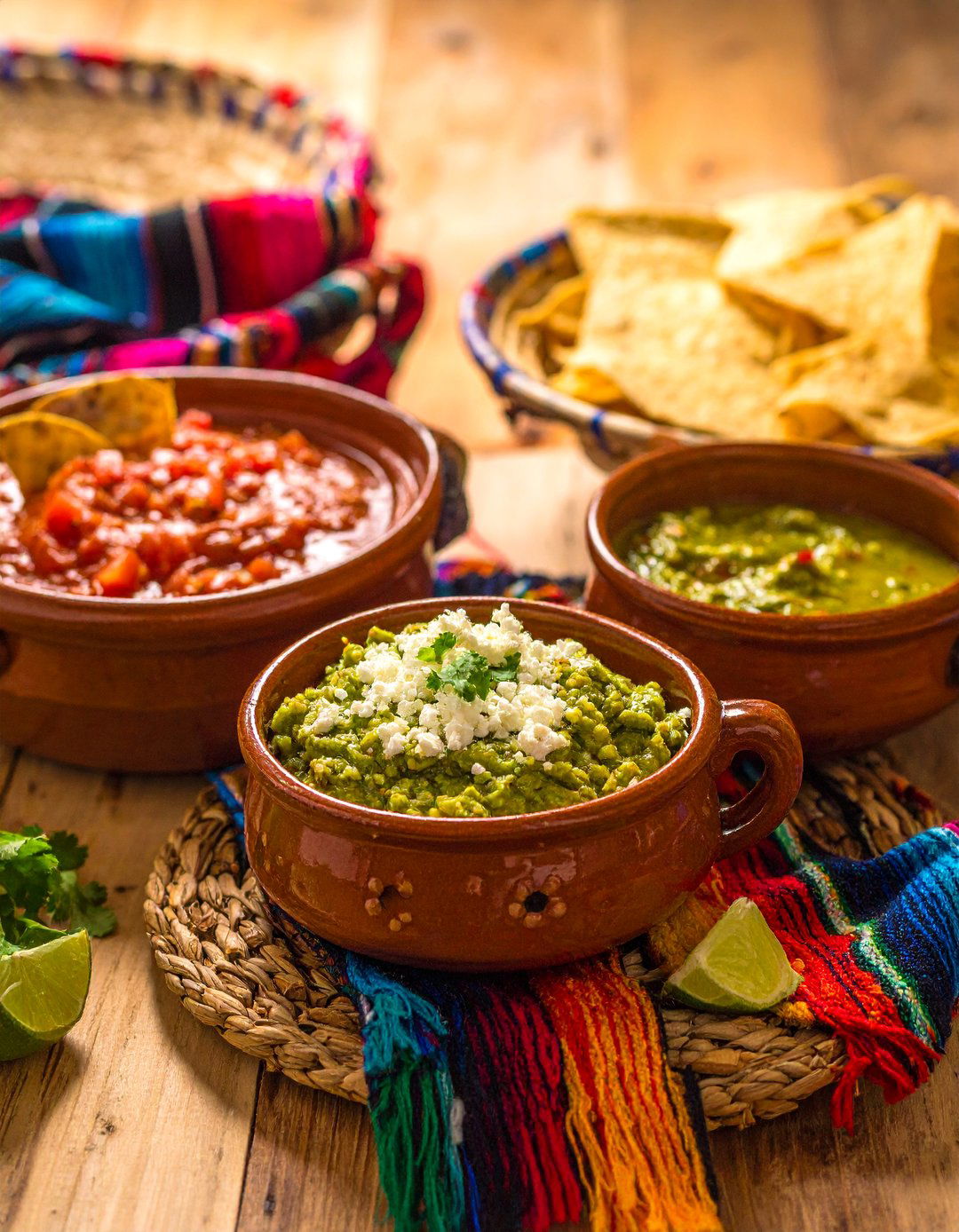
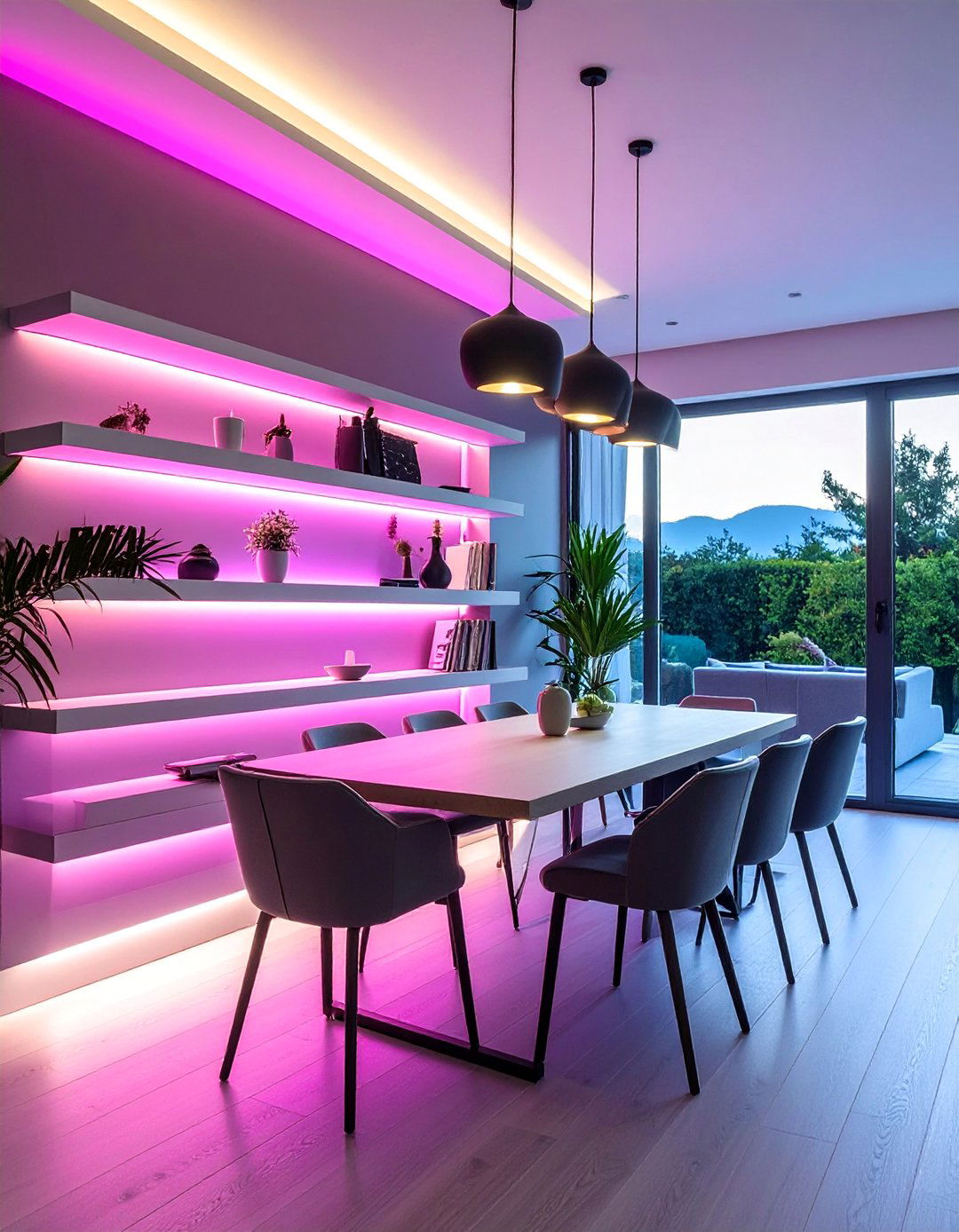
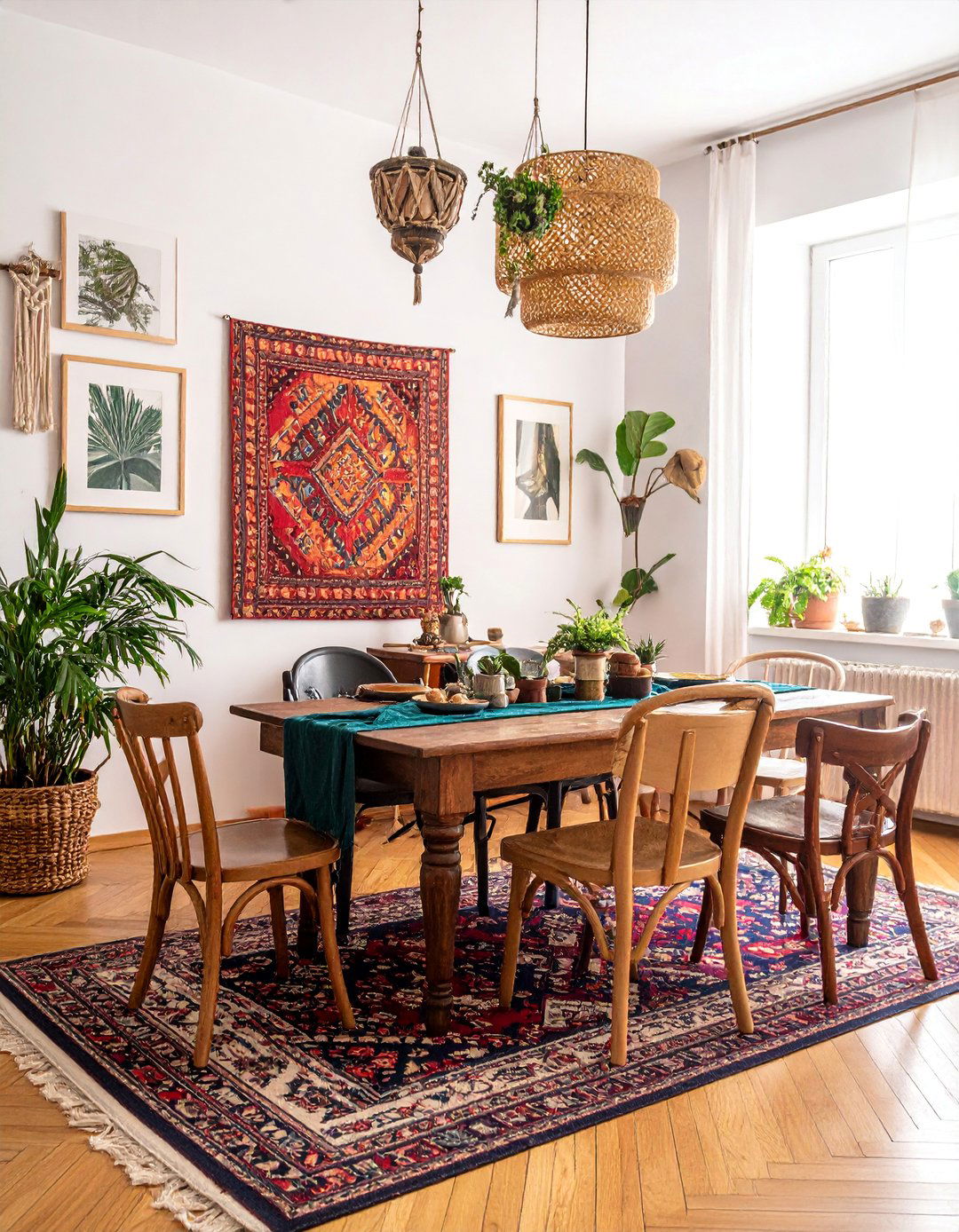
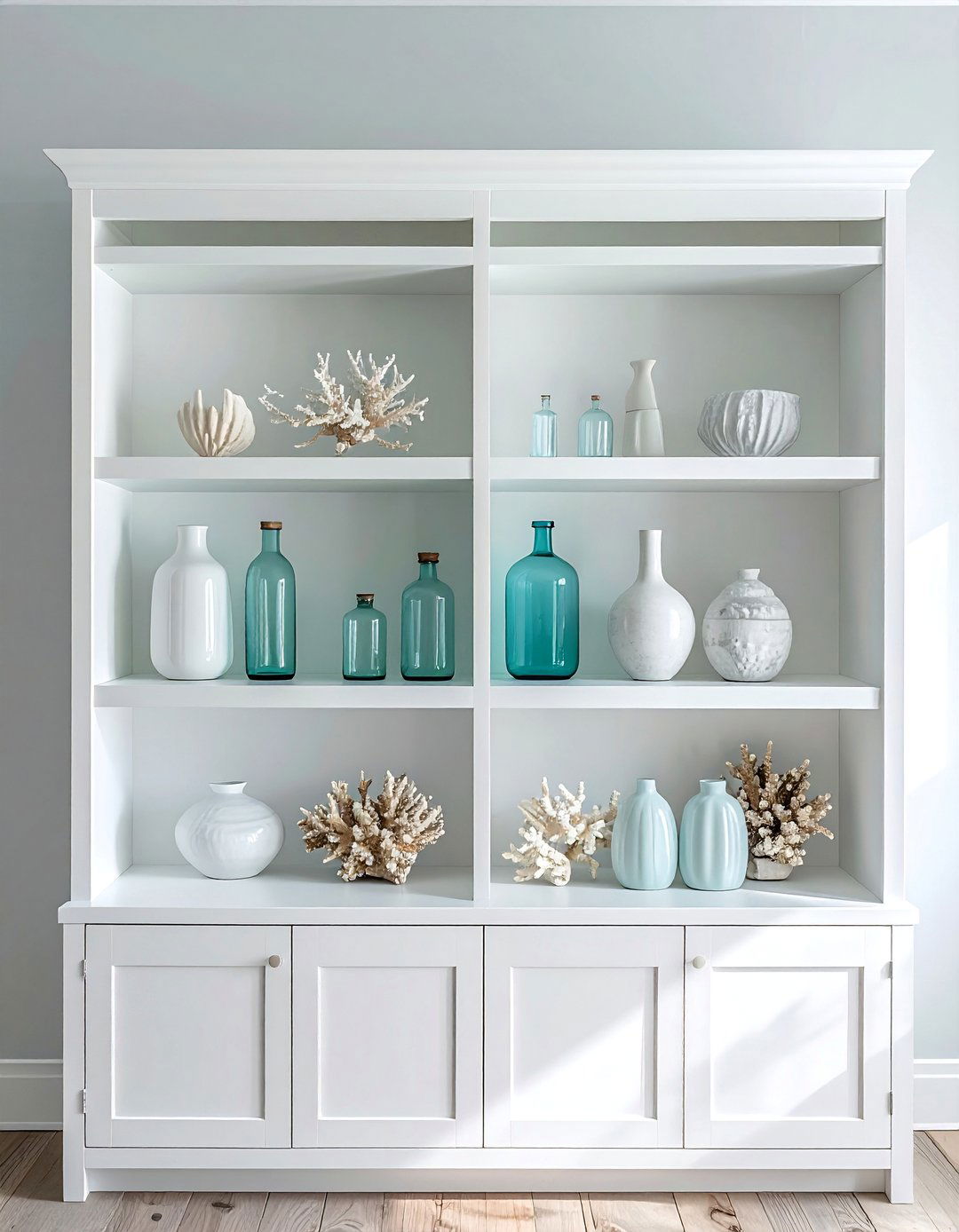
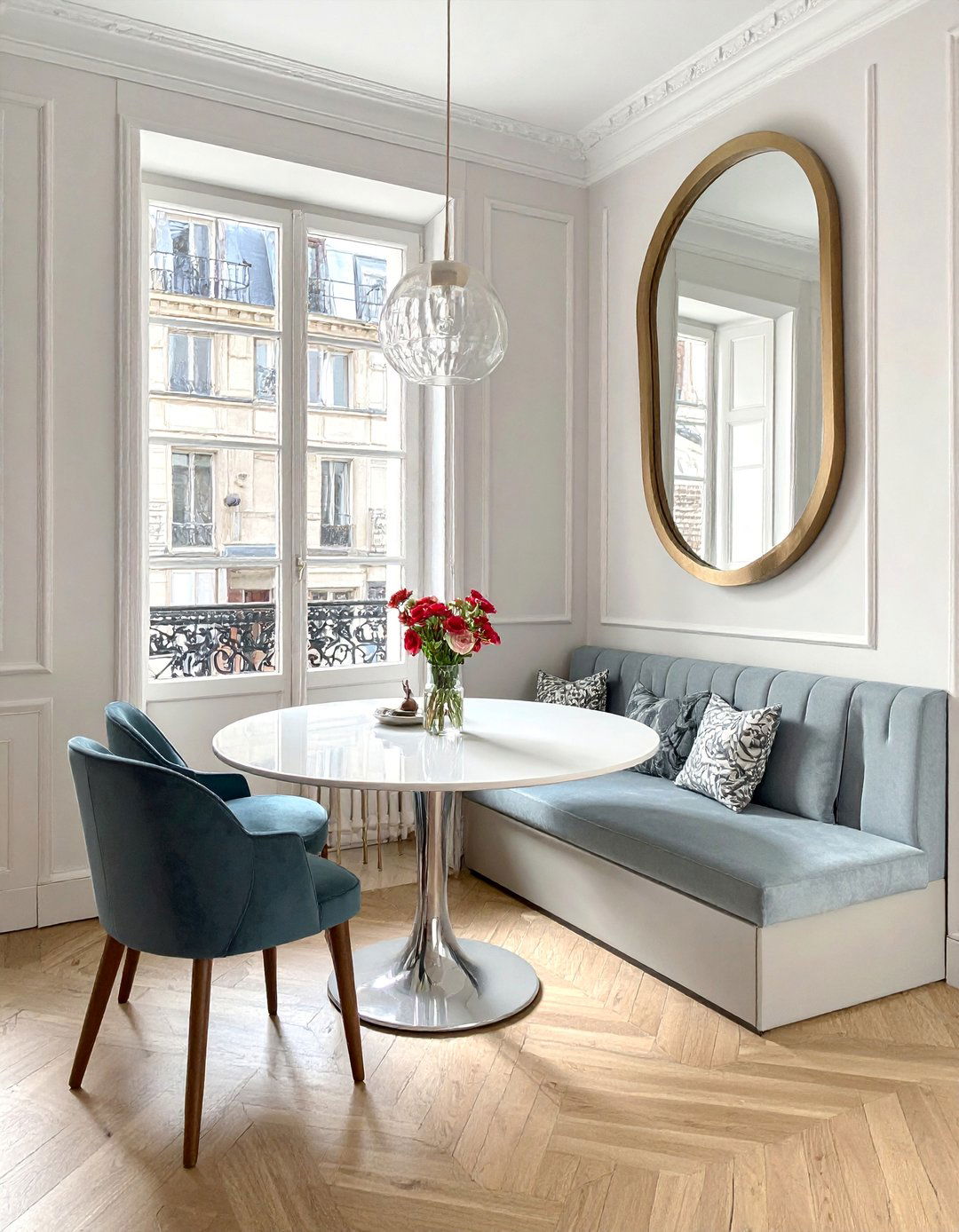
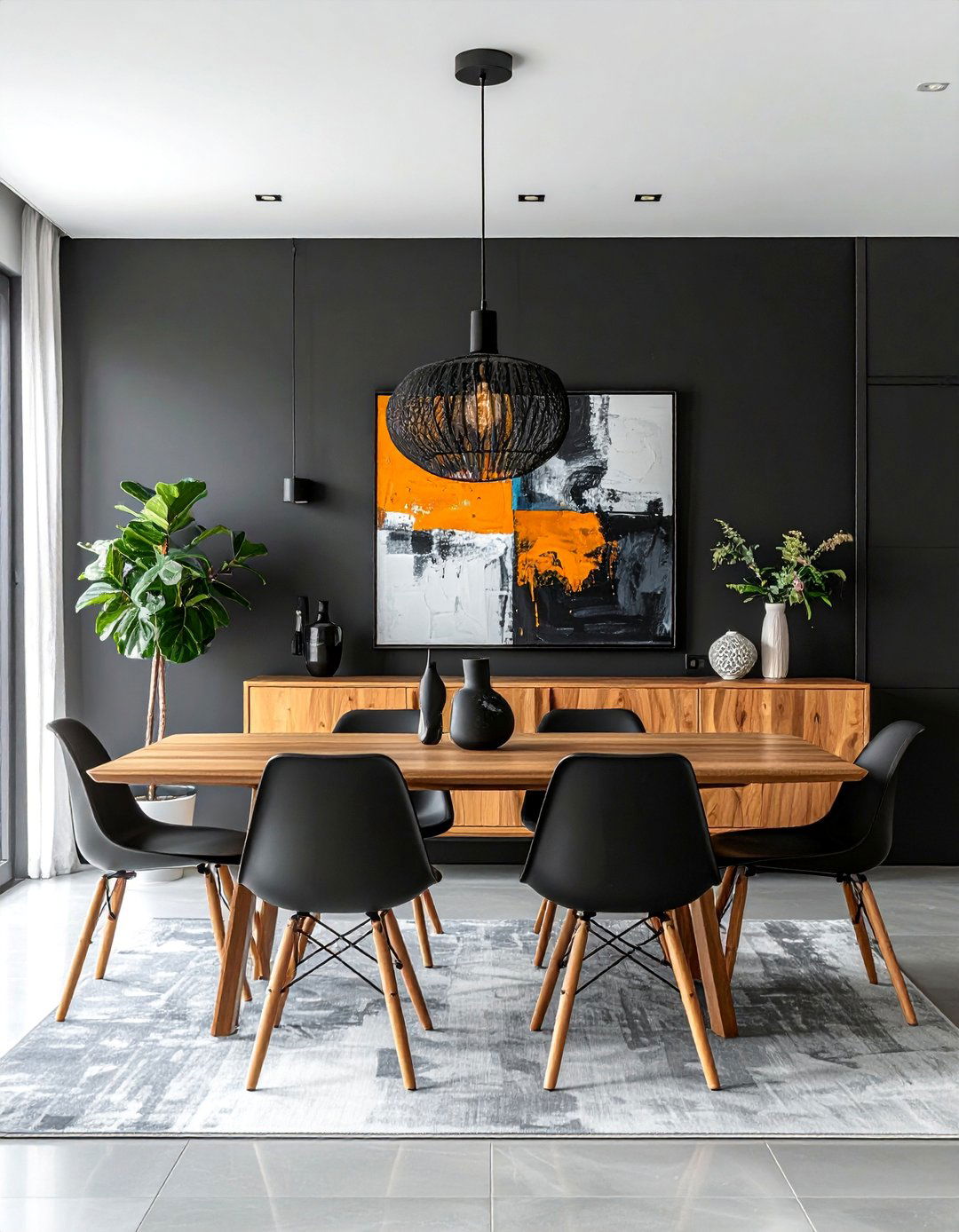
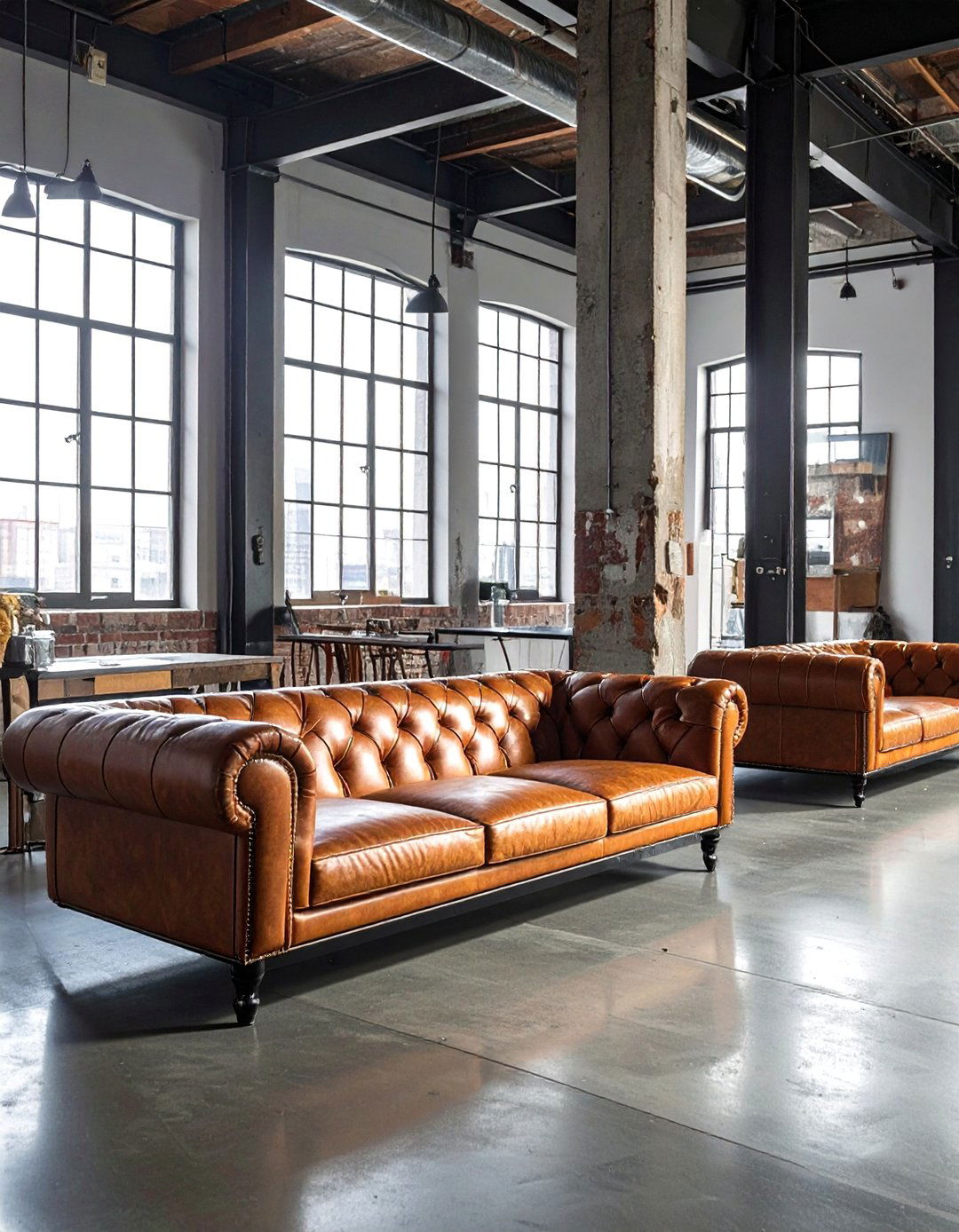
Leave a Reply